Golden leaves, cooler nights, and a craving for richer textures make fall the perfect moment to refresh every flower box in sight. While summer planters often lean on riotous blooms, an autumn window box can play with pumpkins, grasses, berries, and foliage that shrug off the first frost. Garden writers from The Spruce and Lowe’s both note that even a narrow container can echo the whole season when you balance warm colors, airy seed heads, and long-lasting perennials — so think beyond a single pot of mums to combinations that keep interest until winter truly bites.
1. Classic Chrysanthemum Cascade
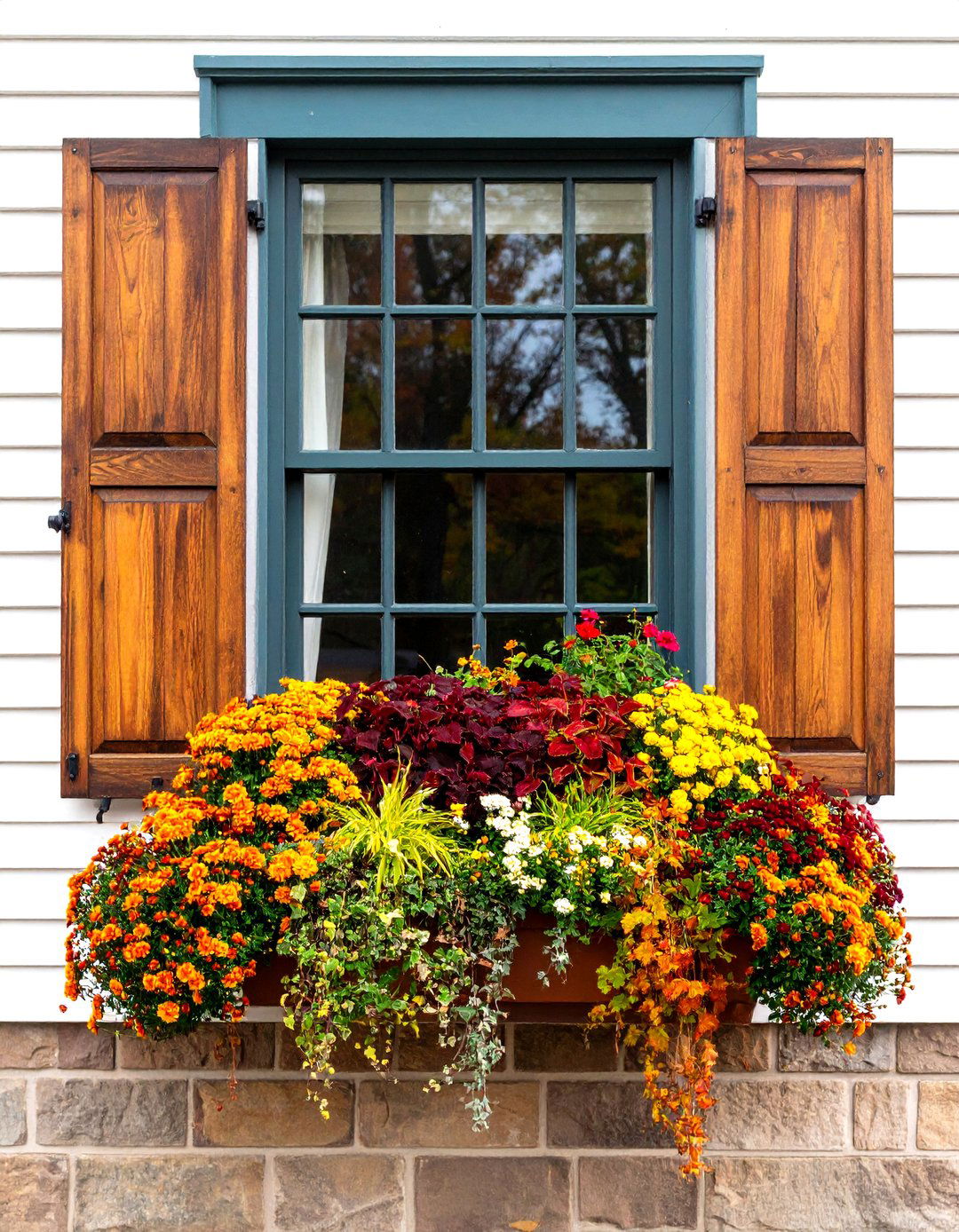
A crisp burst of color arrives when garden mums spill over the lip of your fall flower box, backed by trailing English ivy for contrast. Fine Gardening reminds us that mums remain autumn’s workhorse because new cultivars stay tight-budded for weeks, stretching bloom time deep into November. Layer two shades — burnt orange and burgundy — at each corner for symmetry, add a mid-height filler of lemon-lime sedge, and tuck dark red coleus at the rear. This produces the classic “thriller, filler, spiller” profile while leaving breathing room so each chrysanthemum dome can expand without crowding. Deadhead weekly and water sparingly as nights cool.
2. Ornamental Kale Color Punch
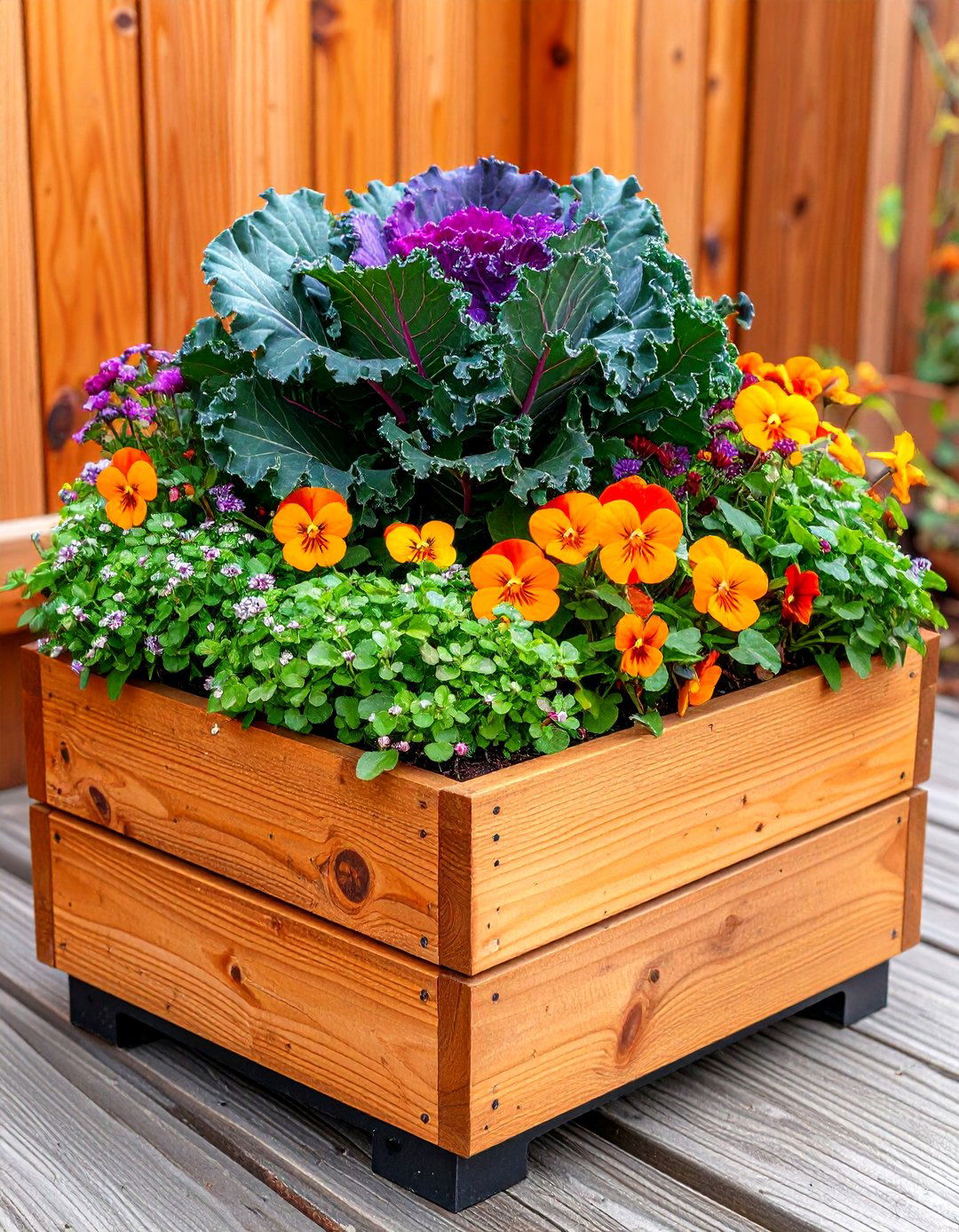
Unlike delicate annuals, ornamental kale intensifies its ruffled pinks and purples as temperatures drop. Lowe’s highlights these hardy rosettes as anchor plants for larger planter boxes where you want drama without fuss. Center one sizable ‘Redbor’ kale, flank it with chartreuse creeping Jenny, and over-plant with dwarf orange pansies for a complementary palette that dazzles right through light frosts. Because kale roots hate soggy soil, drill extra drainage holes or elevate the box on pot feet. A twice-monthly fish-emulsion feeding keeps foliage glossy even after blooms fade.
3. Rustic Pumpkin Planter Box

To introduce unmistakable harvest vibes, nestle mini-pumpkins among foliage instead of soil. Lowe’s suggests mixing white baby boos with classic oranges for instant depth. Pack your flower box first with copper-toned ajuga and wine-colored mums, then wedge the gourds between root balls so they sit slightly proud of the soil. Wind a few branches of winterberry through the display for height and shine. Swap soft pumpkins for resin replicas if squirrels are persistent, and mist the fruits weekly to deter premature shriveling.
4. Trailing Ivy and Asters Tapestry
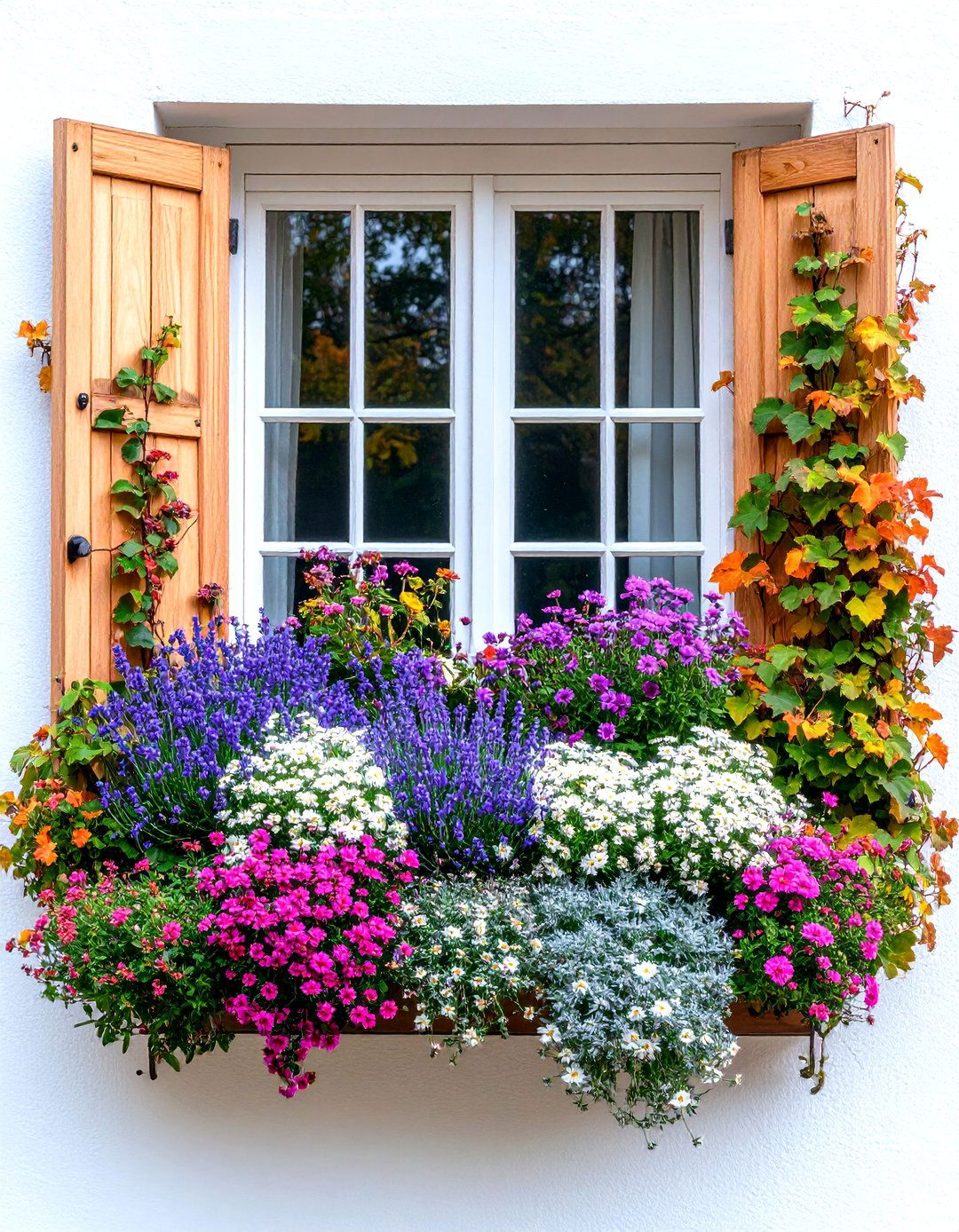
Although asters peak late, The Spruce points out they pair beautifully with evergreen ivy that was likely already in your summer container. Retain the trailing ivy, shear it lightly, and insert three dwarf asters — lavender, mauve, and white — down the center of the box. A skirt of dusty-miller fills gaps while reflecting moonlight on shorter autumn days. Pinch asters after planting to promote branching, and keep them evenly moist; they dislike yo-yo dryness more than cold.
5. Bold Burgundies with Heuchera
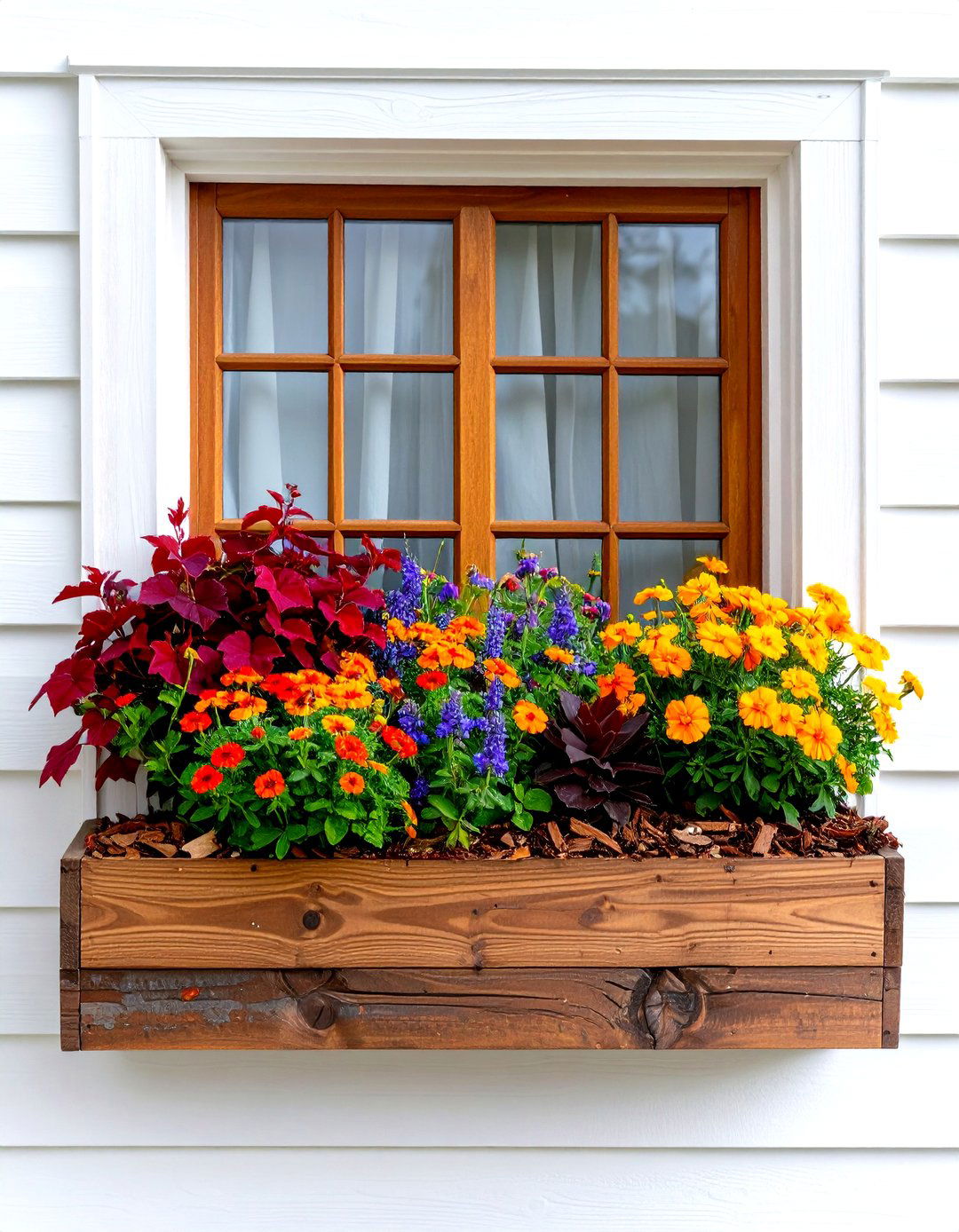
Certainly, coral bells (Heuchera) deliver leaf color long after petals drop. Blooming Backyard’s fall window-box tutorial celebrates deep mauve cultivars as “moody but cheerful. ” Combine two burgundy heucheras with saffron marigolds and a single chocolate ajuga for low-care richness. Because heuchera crowns resent waterlogged soil, elevate them on a slight mound of composted pine bark within the planter. Mulch with decorative bark chips to spotlight foliage textures and suppress autumn weed seeds.
6. Harvest Herb & Flower Mix
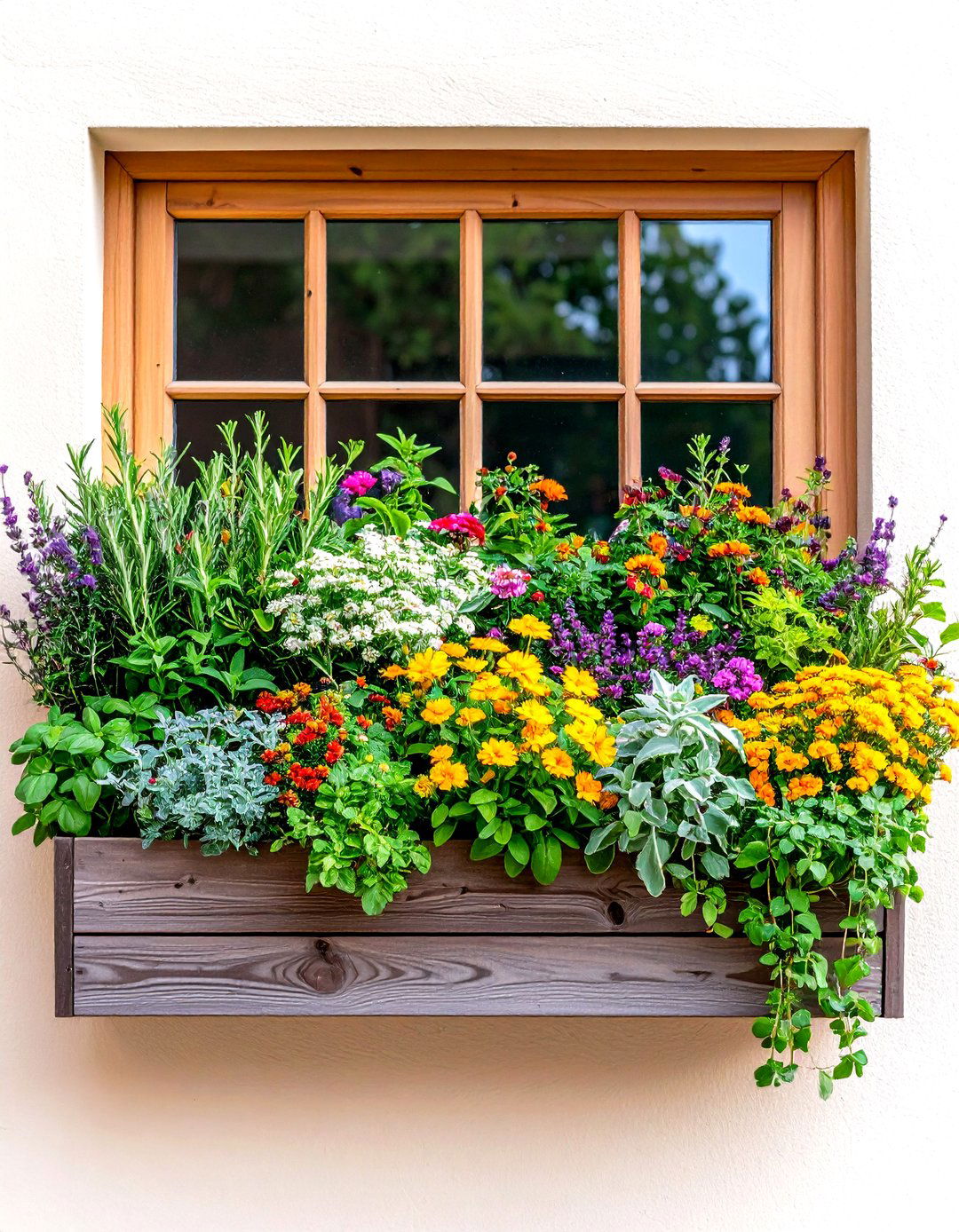
For cooks, nothing beats clipping thyme from the window ledge while admiring blossoms. Dennis’ 7 Dees recommends blending hardy herbs — rosemary, sage, and variegated oregano — with russet mums and trailing lysimachia for a multi-sensory box. Space woody herbs toward the rear for structure, then weave flower clusters diagonally so each snip of sage still leaves color in sight. Monthly applications of organic seaweed feed both herbs and blooms without overpowering flavor.
7. Smoky Purple Pansies Splash

Unlike their spring cousins, fall pansies offer velvety jewel tones that glow in low light. Fine Gardening lists violas and pansies among top frost-braving plants, surviving into December in many zones. Choose ‘Matrix Midnight’ pansies, partner them with bronze carex grass, and edge with silver artemisia. This trio creates a sophisticated blue-gray palette. Pansies flower heavier in cool weather but still appreciate a liquid bloom booster every three weeks. Remove spent blooms promptly for nonstop color.
8. Dried Wheat & Fresh Bloom Blend
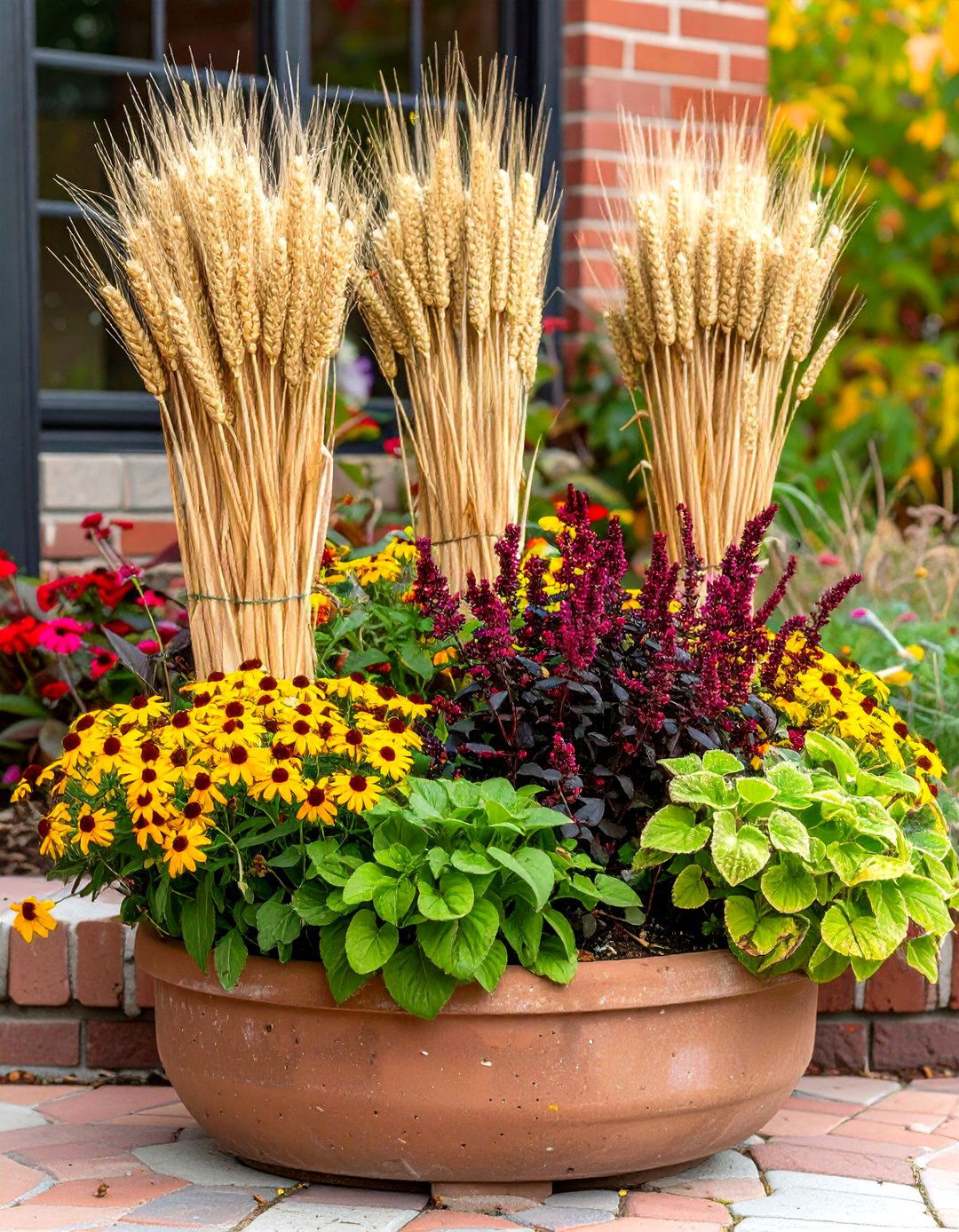
A, combining dried wheat sheaves with live flowers adds height without extra watering. Better Homes & Gardens’ roundup encourages inserting harvested grain, curly willow, or lotus pods to stretch a planter’s skyline. Sink three wheat bundles at the back of your flower box, then plant amber mums, honey-gold rudbeckia, and chartreuse coleus in front. The static wheat contrasts dynamically against shifting petals and leaves. Replace any moisture-wicking foam weekly so stems stay upright even during autumn showers.
9. Mini Conifer & Marigold Contrast
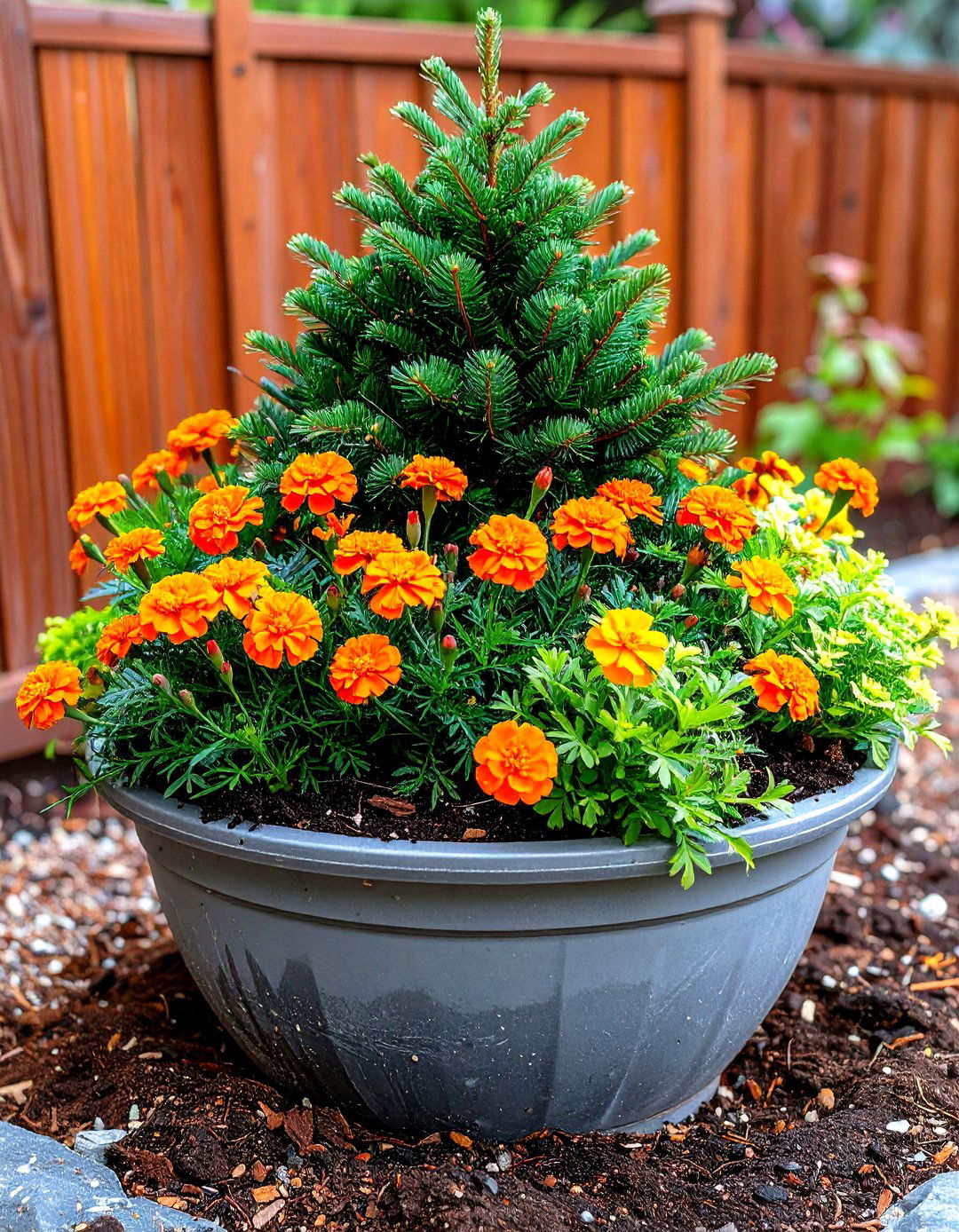
Consider showcasing a pint-size dwarf Alberta spruce as a long-term center point. Midwest Living notes that evergreens lend architecture and let you swap annual color around them seasonally. Circle the spruce with burnished orange marigolds and lemon-lime creeping Jenny for a sunrise palette. Because conifers prefer sharp drainage, amend mix with two parts coarse sand. After frost kills the marigolds, tuck in pinecones and red twigs for an instant winter transition without disturbing the tree.
10. Jewel-Toned Dianthus Design
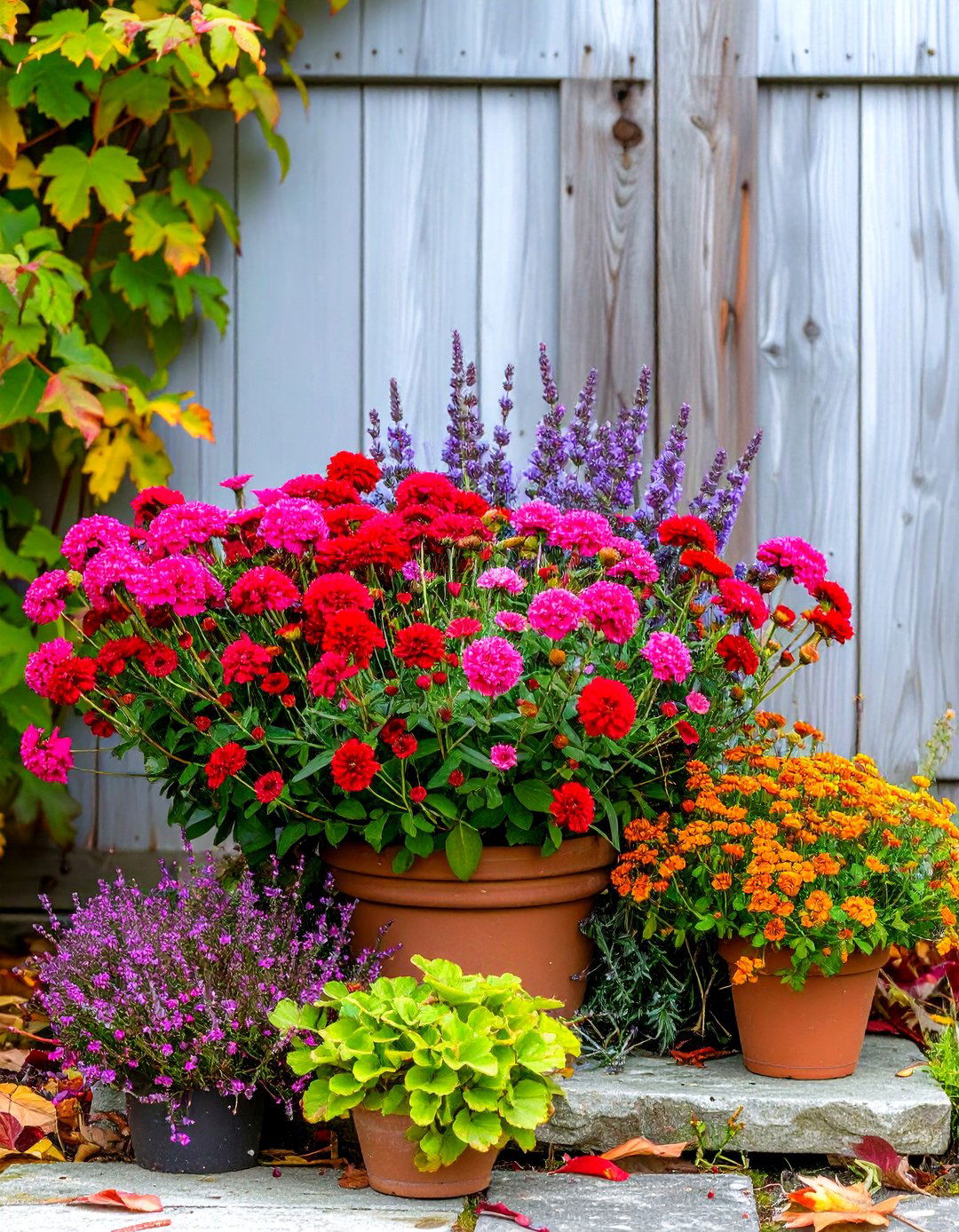
With their spicy clove scent, dianthus varieties such as ‘Rockin’ Raspberry’ read like living potpourri. Fine Gardening highlights their ability to push blooms after a light frost when deadheaded diligently. Combine magenta dianthus with smoky lavender heliotrope and chartreuse heuchera in your fall flower box. The tight mound habit of dianthus means petals won’t flop even when October winds whip. An occasional pinch of spent blooms keeps buds forming until temperatures hover near freezing.
11. Sun-Loving Sedum Spotlight

Unlike many perennials, sedum’s succulent leaves store water, making it nearly foolproof. Fine Gardening recommends lifting divisions from garden beds midsummer and potting them for autumn containers. Plant ‘Autumn Joy’ sedum at mid-box height, back it with ornamental millet plumes, and trail variegated ivy below. The sedum’s rusty umbels echo millet’s seed heads, creating textural harmony. Water sparingly; too much moisture causes stems to sprawl.
12. Fragrant Lavender & Dusty Miller Calm
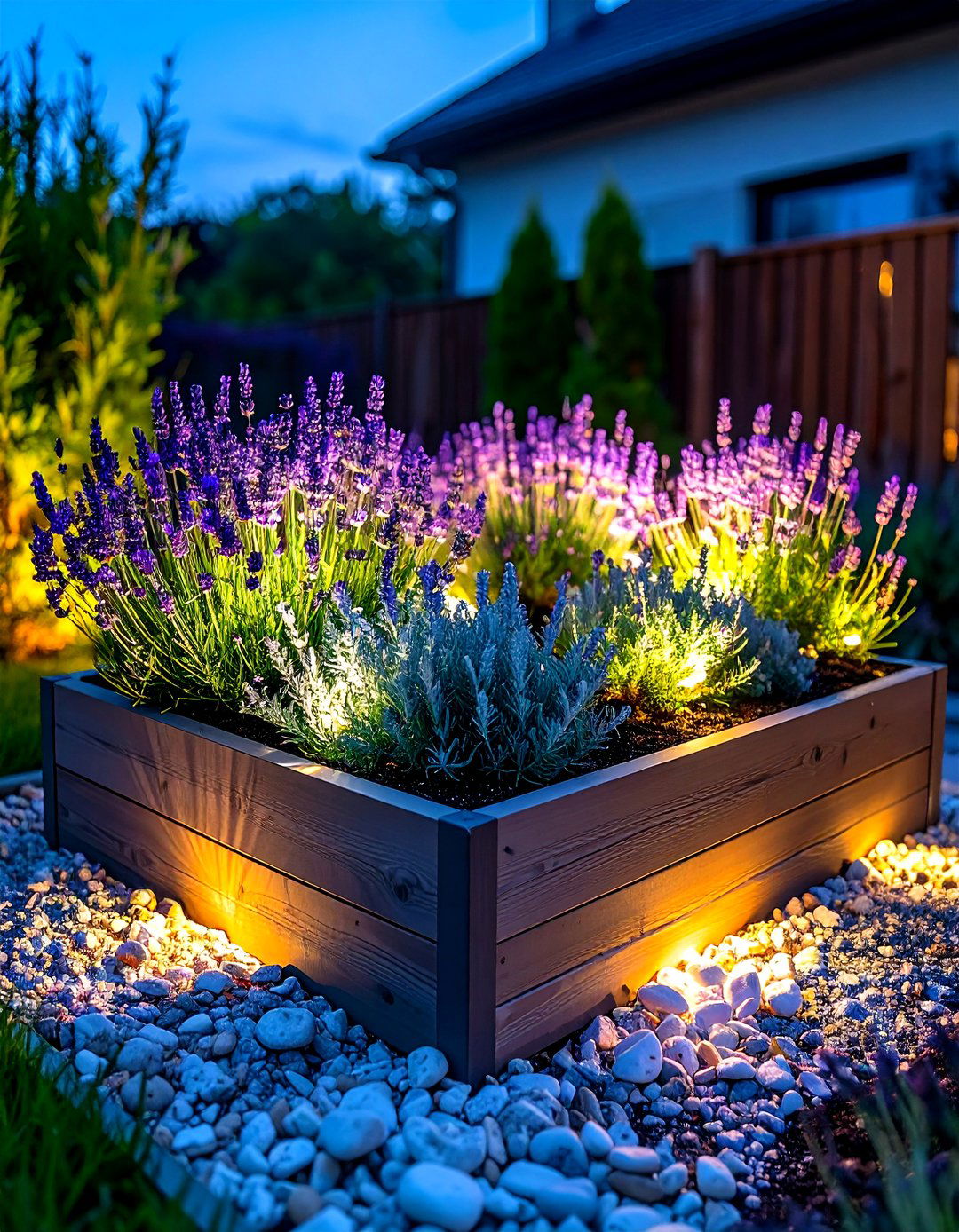
To soften bold autumn palettes, weave in silvery foliage and scent. Lowe’s “fragrant flower” idea mixes English lavender with dusty miller and trailing rosemary for a soothing aroma each time the window opens. Keep lavender toward the sunniest edge of the flower box, ensure a gritty soil blend, and resist overwatering. The cool nights intensify essential oils, so you’ll notice stronger fragrance even as blooms slow.
13. Late-Summer Zinnia Transition Box
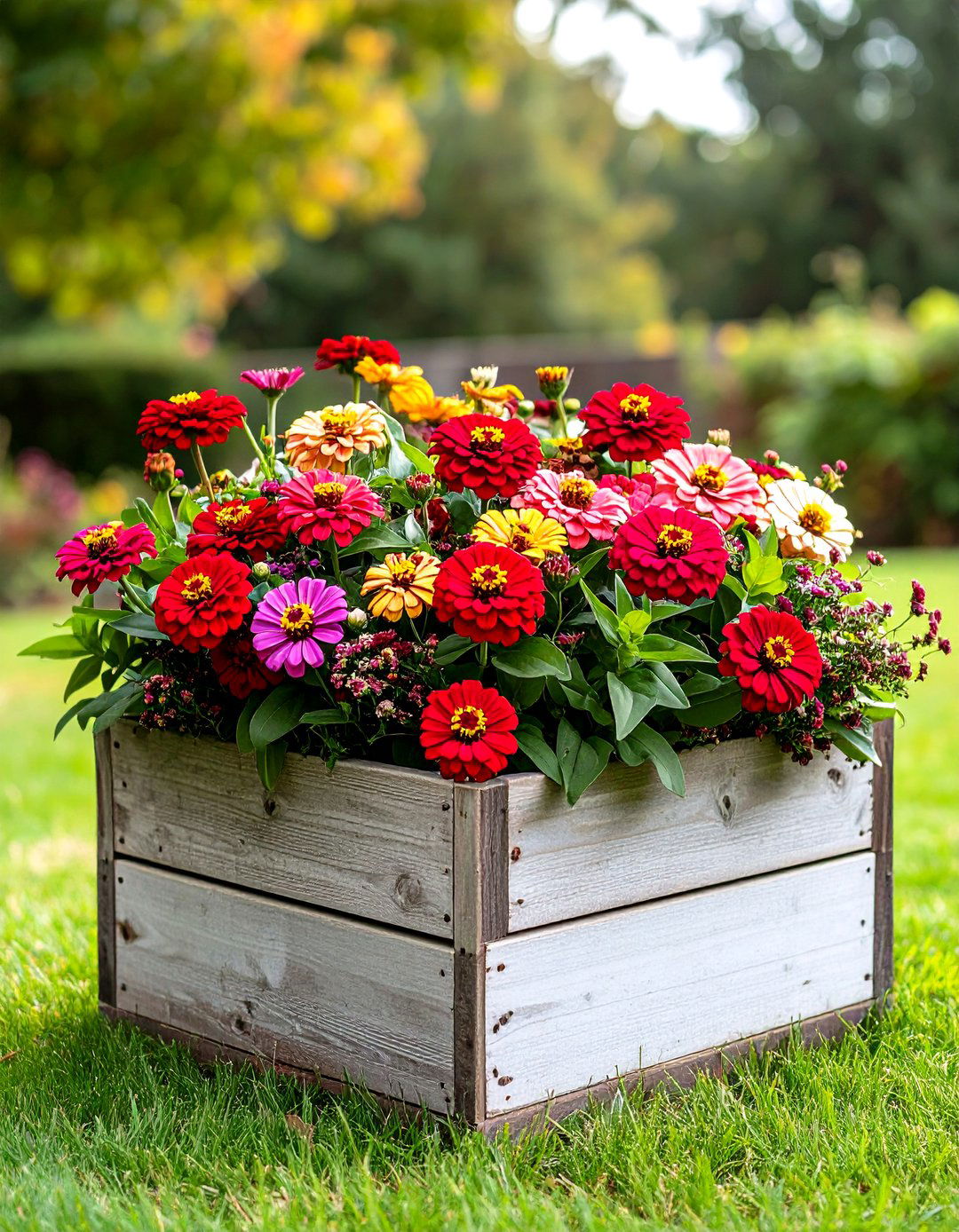
Looking at zinnias still glowing in September, why pull them out? BHG’s 36-idea guide urges gardeners to repurpose heat-tough annuals by pairing them with early-blooming asters for a smooth seasonal hand-off. Pop dwarf red zinnias in the center, ring with purple asters, and edge with bronze sweet potato vine. As frost claims the zinnias, asters take the baton, ensuring no awkward color gap on your sill.
14. Vibrant Ornamental Pepper Pop
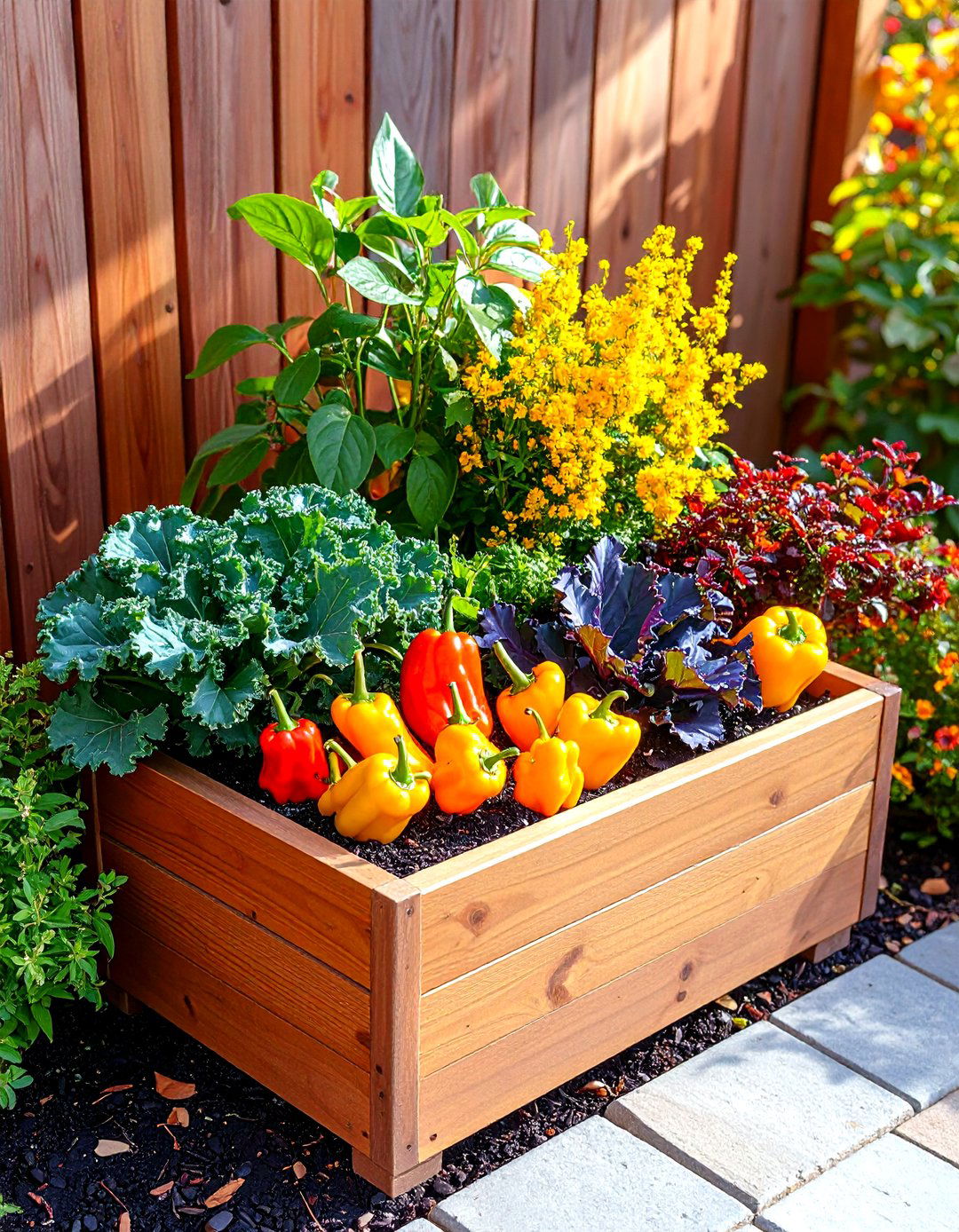
Surprisingly, ornamental peppers deliver both fiery shades and upright form. Dennis’ 7 Dees lists them among the longest-lasting fall annuals, often persisting until a hard freeze. Insert a trio of ‘Chilly Chili’ peppers alongside plum-leafed kale and trailing golden lysimachia. Their glossy fruits offer instant curb-appeal sparkle. Do wear gloves when transplanting; while “ornamental, ” the capsaicin can still irritate skin.
15. Calibrachoa Sunset Blend
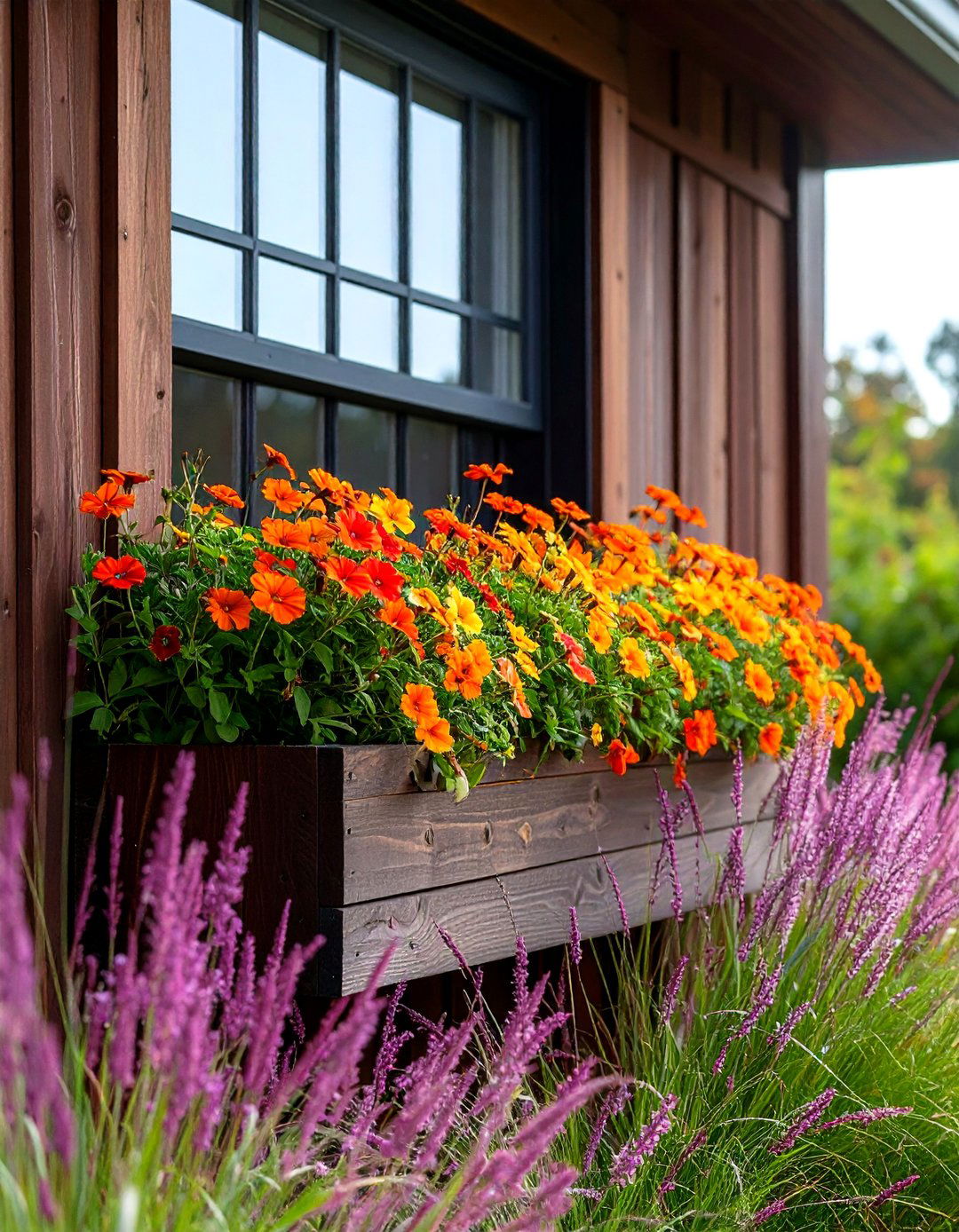
The petunia cousin calibrachoa tumbles generously, and Midwest Living’s experts favor it for filling gaps without overshadowing focal points. Plant a sunset mix — coral, apricot, and gold — beneath sky-high purple fountain grass in your flower box. Feed weekly with dilute bloom fertilizer; heavy flowering can exhaust nutrients quickly in small soil volumes. Pinch back runners mid-season to keep a balanced cascade.
16. Bronze Coleus & Golden Grass Drama

Owing to their photo-sensitive pigments, bronze coleus leaves intensify as daylight shortens. Fine Gardening’s autumn palette article pairs them with flax-like grasses for movement and glow. Use ‘Campfire’ coleus against feathery ‘Ogon’ sweet flag, then highlight with ivory snapdragons. These upright forms mirror the vertical lines of window mullions, subtly framing the view. Water at soil level to prevent spotting colorful foliage.
17. Ornamental Cabbage Centerpiece
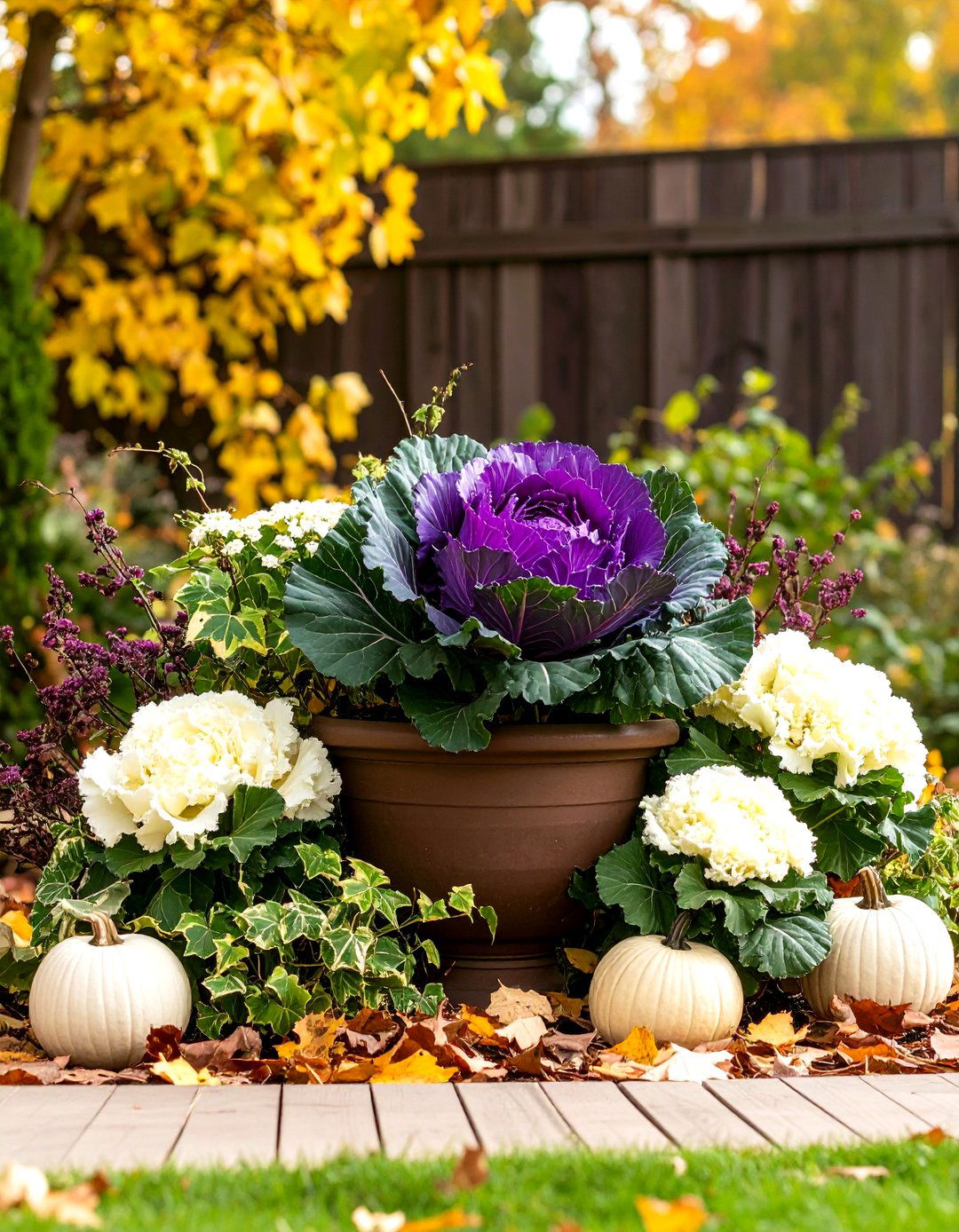
Unlike edibles, flowering cabbages hold symmetrical rosettes well below freezing and blush brighter as mercury falls. Lowe’s recommends situating them front-and-center in deeper planter boxes. Surround a large purple-rimmed cabbage with white mums and variegated ivy for formal elegance. Gently peel outer leaves if road splash stains them; healthy inner layers will replace the lost ring within days.
18. Textured Seed-Pod Accents
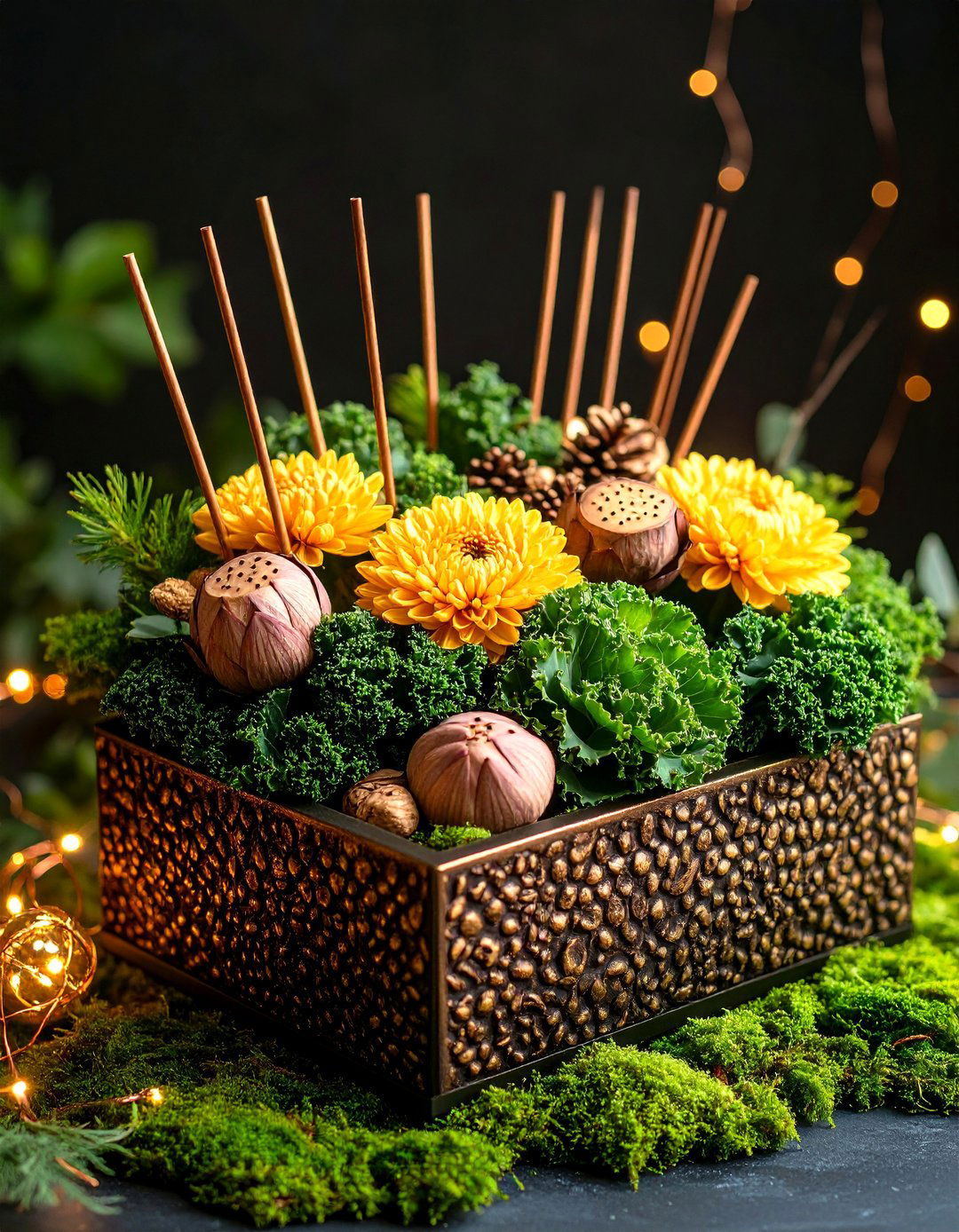
Bringing lotus pods or curly willow into a living arrangement delivers architectural intrigue with zero maintenance. BHG champions the mix of fresh and dried elements to stretch creativity. Pierce pods onto bamboo skewers, insert among golden mums and chartreuse kale, then drape copper wire lights for twilight sparkle. Replace pods seasonally — save them in a dry garage and reuse next year.
19. Cottage-Style Snapdragon Box

From late summer into light frost, dwarf snapdragons bloom repeatedly if deadheaded. Southern Living includes them in its container-garden shortlist for color depth and nostalgia. Combine candy-pink snaps with airy baby’s breath and sage-green lamb’s ear for an old-world palette. Because snapdragons favor cool roots, mulch the soil surface with fine gravel to buffer fluctuations on sunny brick walls.
20. Grasses & Black-Eyed Susan Bright
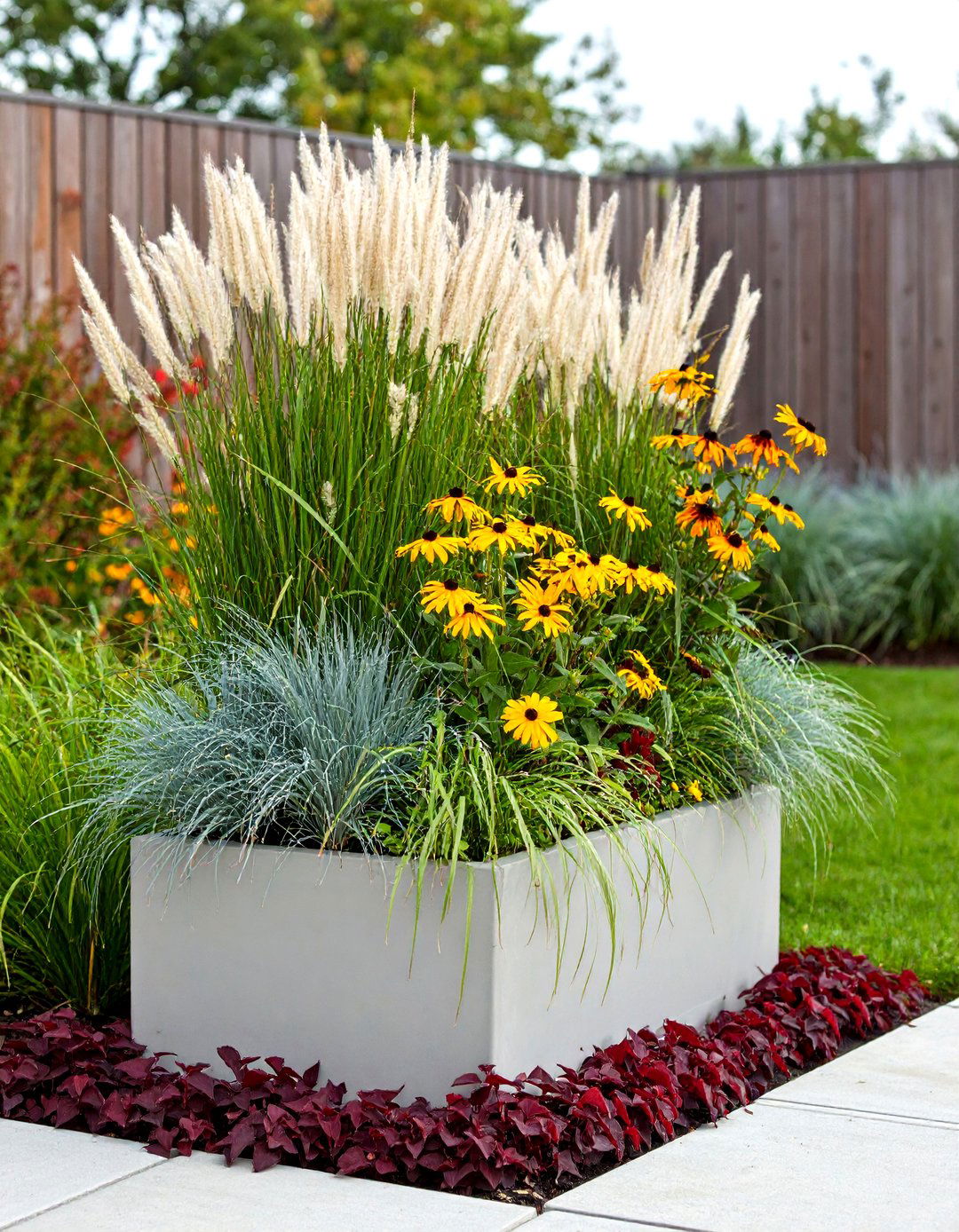
Hybrid rudbeckia offers saturated yellows while staying compact enough for window boxes. Dennis’ 7 Dees pairs them with tufted grasses for contrast and durability. Position two pots of ‘Denver Daisy’ rudbeckia between fountain-like blue fescue; weave burgundy sweet potato vine to ground the scheme. Cut rudbeckia stems for vase use — regular harvesting will trigger fresh buds through fall.
21. Berries & Bittersweet Theme
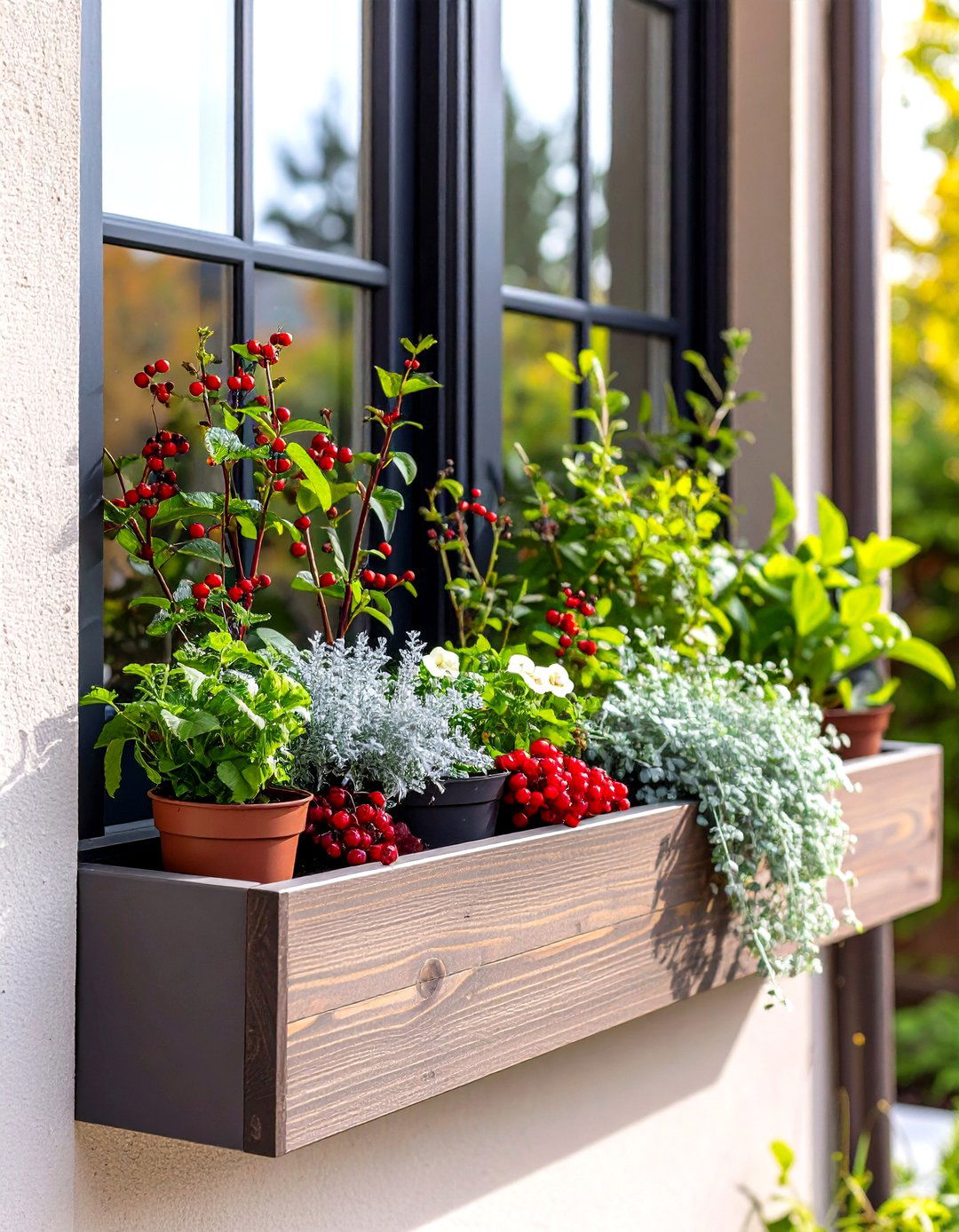
Another, embracing fruiting stems extends interest when petals wane. BHG’s guide advises clipping bittersweet or pyracantha branches and staking them at the back of a planter for instant height and seasonal flair. Complement with cream violas and trailing silver dichondra so orange berries really pop. Refresh water picks weekly on cut branches to prevent early drop.
22. Shade-Loving Cyclamen Charm
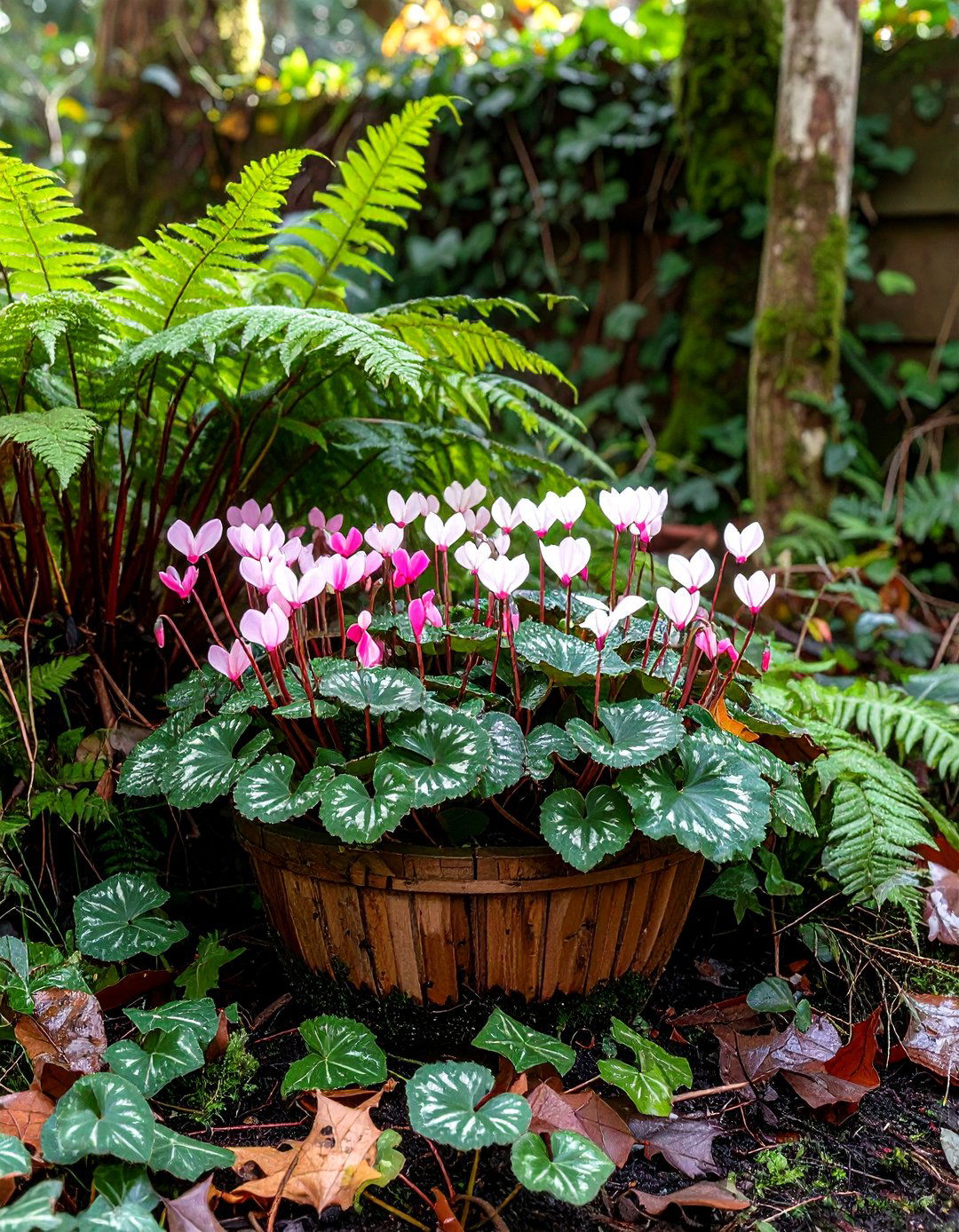
When your window spends afternoons in shadow, try hardy cyclamen. Dennis’ 7 Dees suggests tucking these low-growing gems under taller companions for dappled light. Surround magenta cyclamen with feathery ferns and variegated ivy to echo woodland floors. Keep soil barely moist — cyclamen corms rot if overwatered — and remove yellowing leaves promptly to avoid gray mold in cool, still air.
23. Pollinator-Friendly Fall Mix
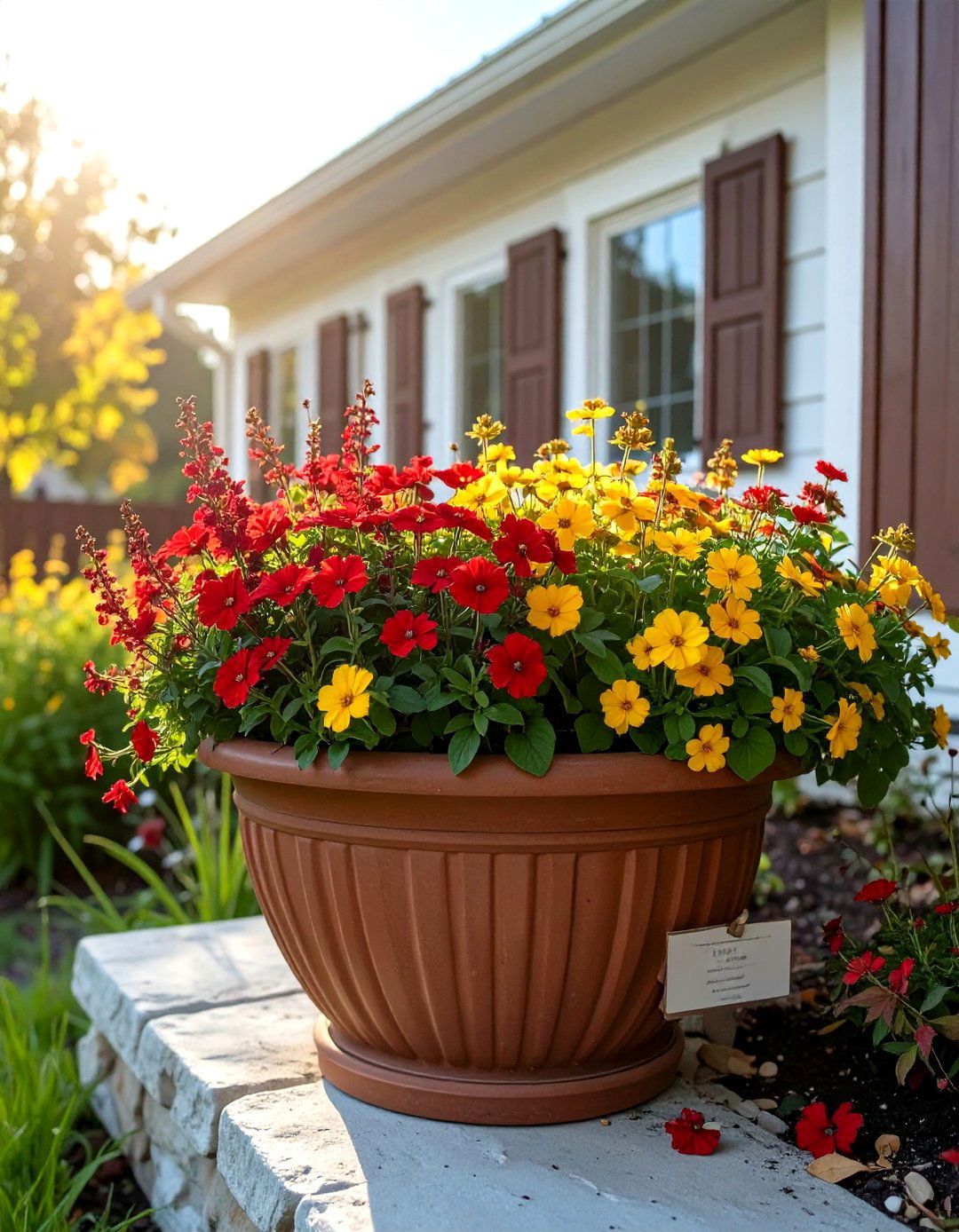
Studies show late-season nectar is crucial for migrating bees, and Midwest Living highlights window boxes as mini-refueling stations. Combine velvet-red salvia, golden lantana, and airy gaura in a sunny planter. Each offers blooms into October, providing food when gardens thin out. Avoid systemic insecticides, opting for hand picks on any stray aphids so pollinators remain safe.
24. Minimalist Monochrome Whites
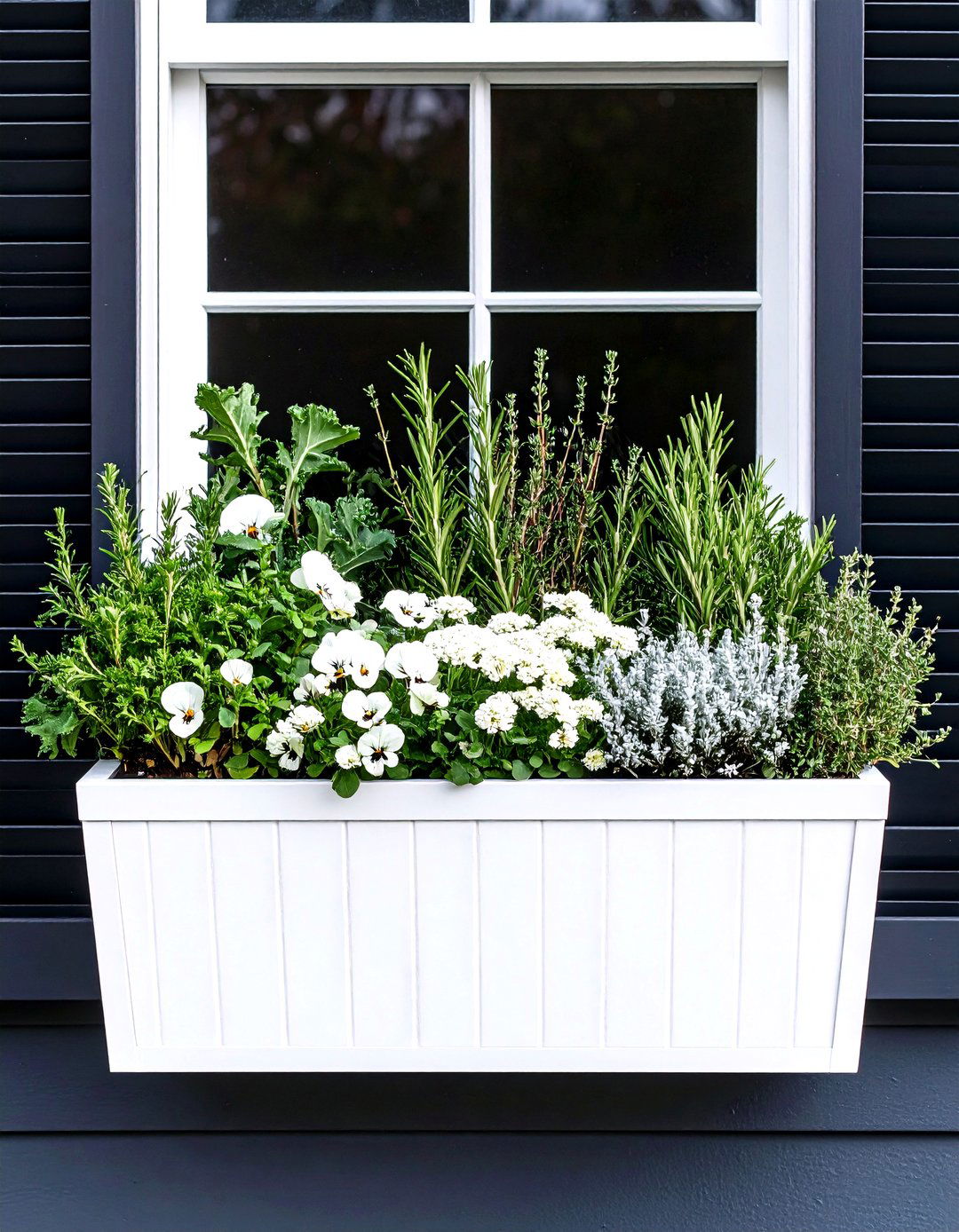
Unlike busy color riots, a single-hue palette reads crisp against weathered clapboard. Midwest Living showcases an all-white composition using crane kale, ‘Delta Pure White’ pansies, and white mums. Echo these with silver thyme and frosted rosemary for scent. The restrained scheme highlights container shape and architectural details of the house, especially striking against dark shutters.
25. Frost-Tolerant Violas Finale
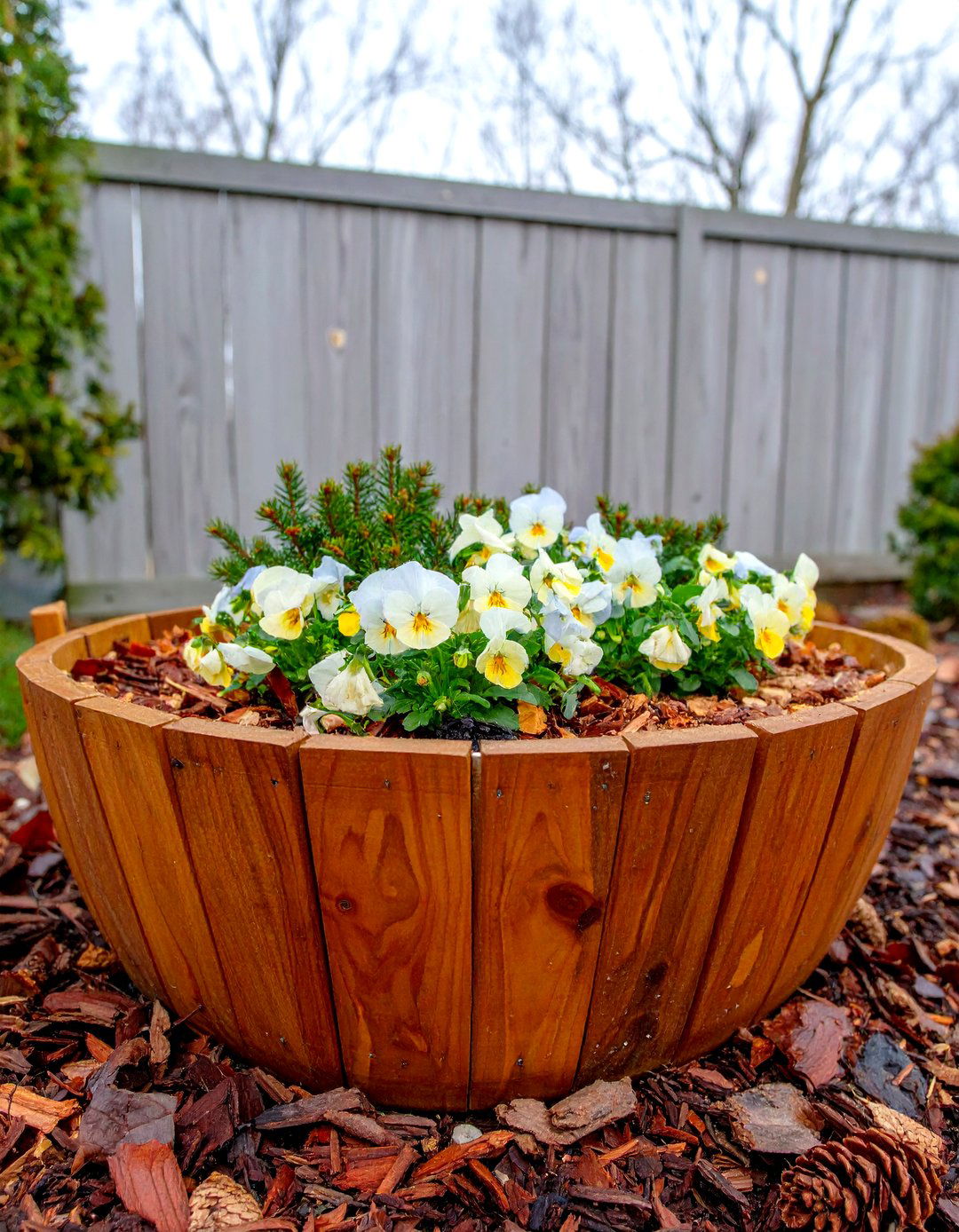
To wrap things up, frost-kissed violas carry your flower box through early winter. Fine Gardening lists them among the last blooms standing, often reviving after a thaw. Plant a dense carpet of lemon-purple ‘Etain’ violas, tuck in sprigs of dwarf spruce for permanence, and top-dress soil with crushed pinecones for a woodland finish. When nights dip below 25 °F, throw a breathable frost cloth over the planter to enjoy color right through the holidays.
Conclusion:
Thoughtful layering of texture, fragrance, and cold-hardy plants turns an ordinary fall flower box into a living tapestry that evolves from September spice to November glow. Whether you favor jewel-tone mums, sculptural cabbages, or the soft silver of dusty miller, each idea above pairs reliable performers with small design tweaks — dried wheat, miniature conifers, or monochrome restraint — to keep window ledges vibrant well past the first frost. Mix and match the concepts that suit your light, climate, and cooking needs, and you’ll harvest color, scent, and personality every time you glance outside.


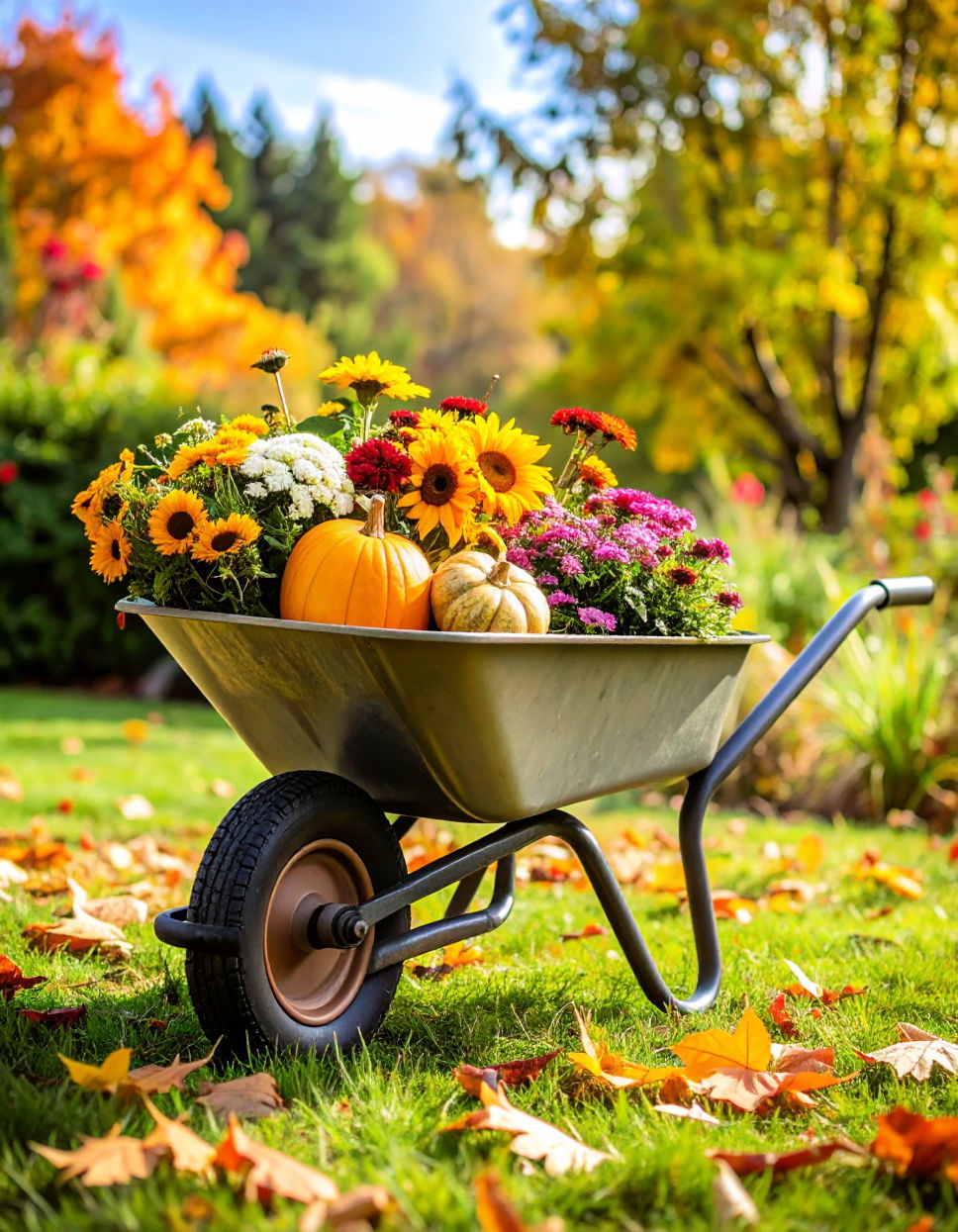
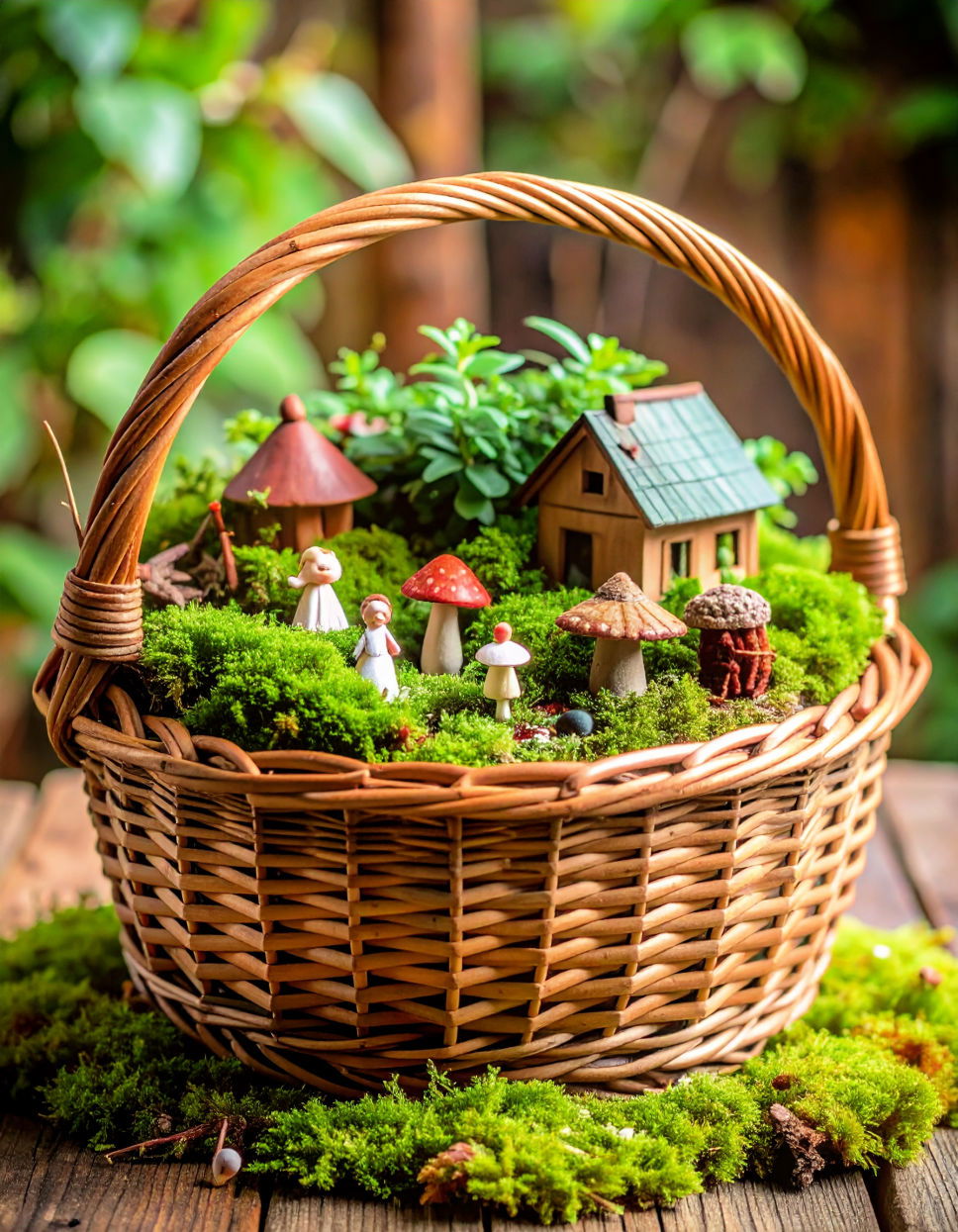
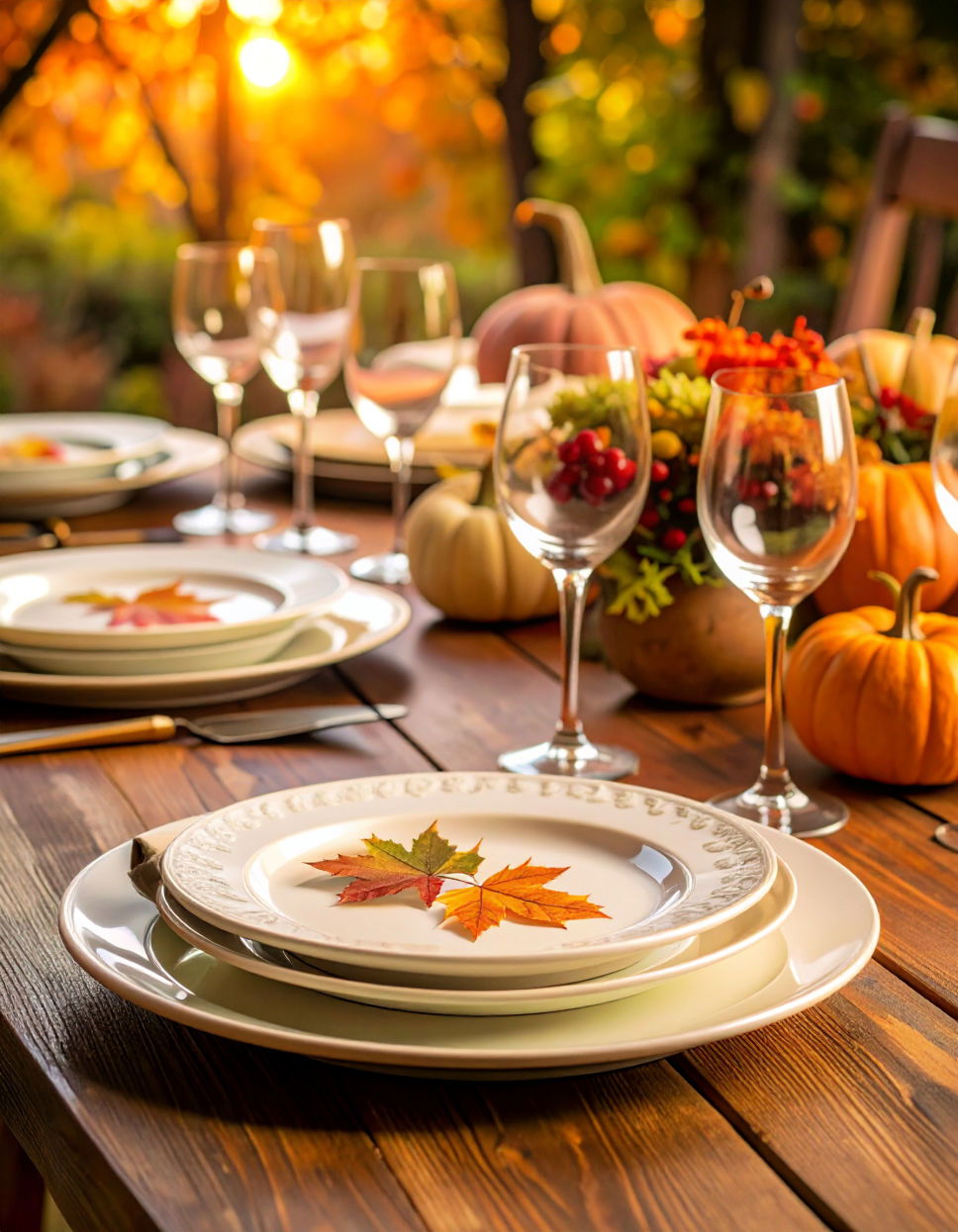
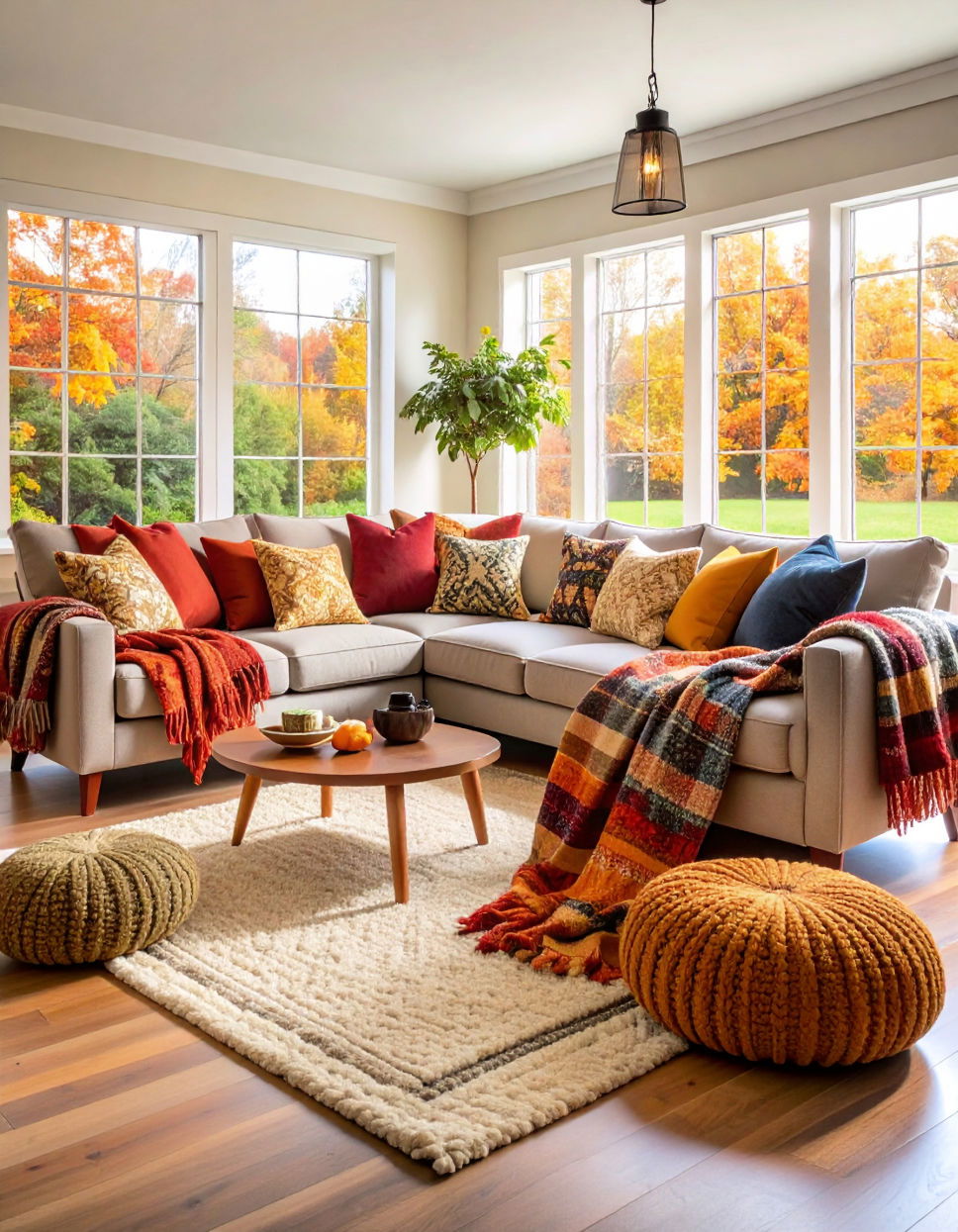
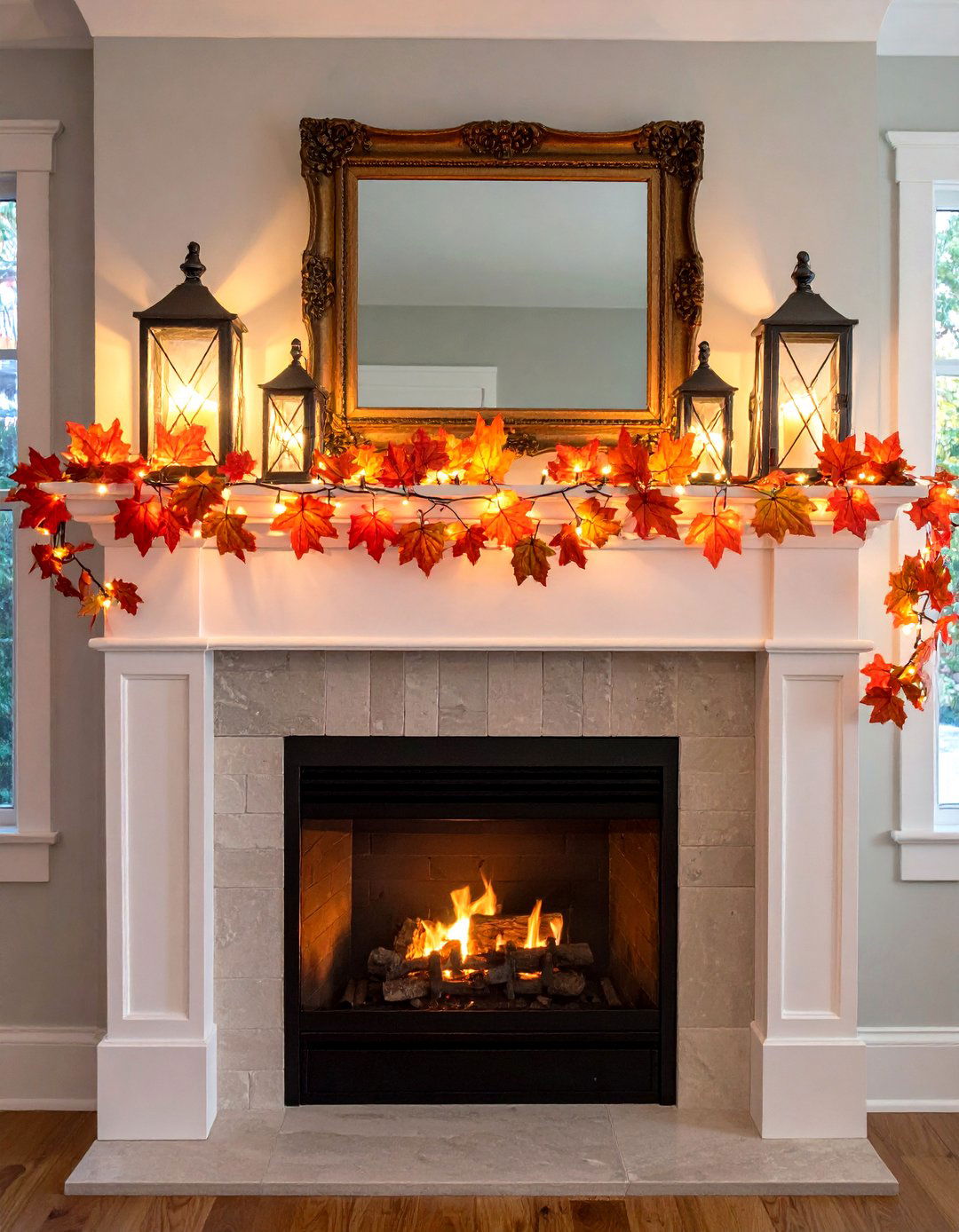
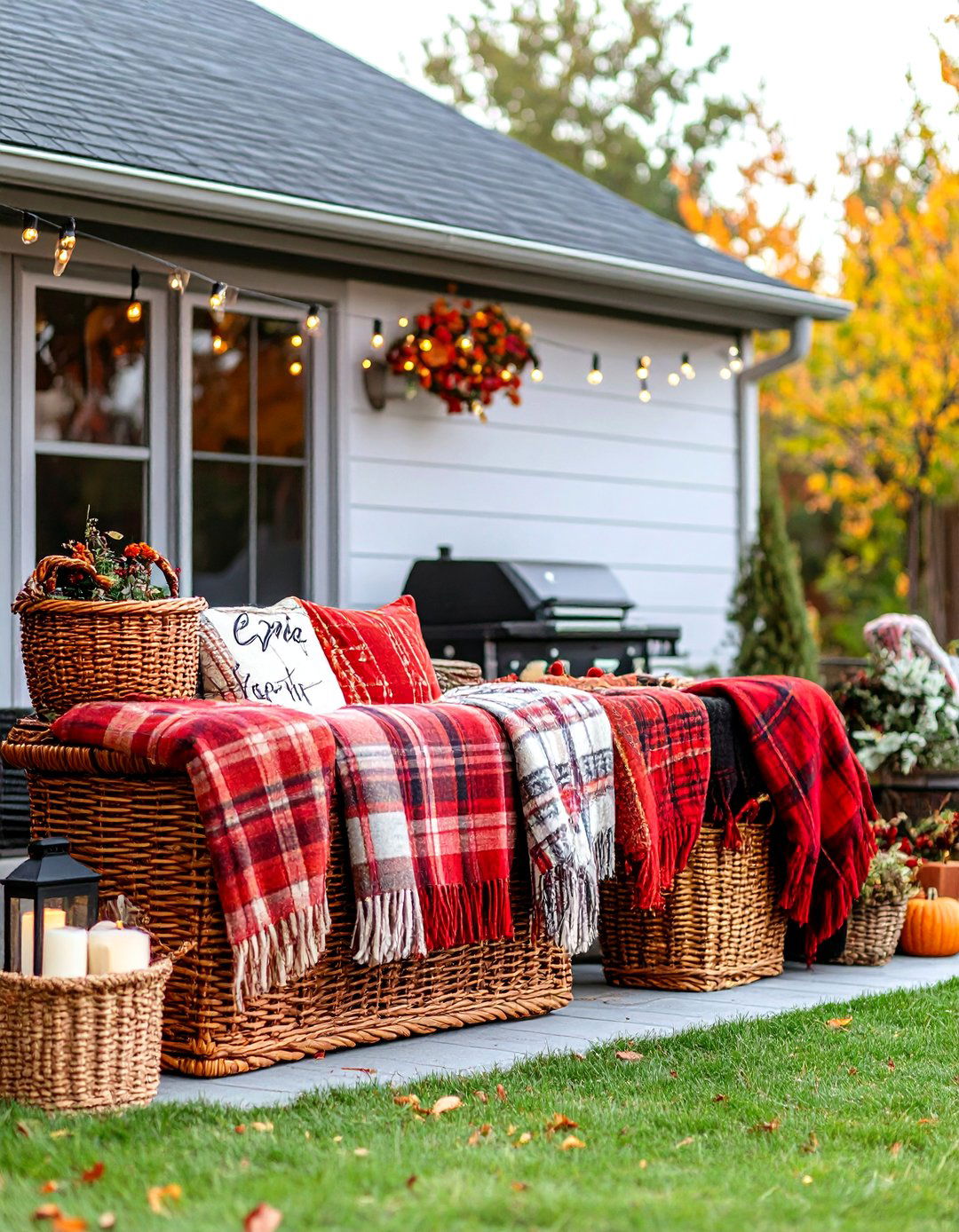
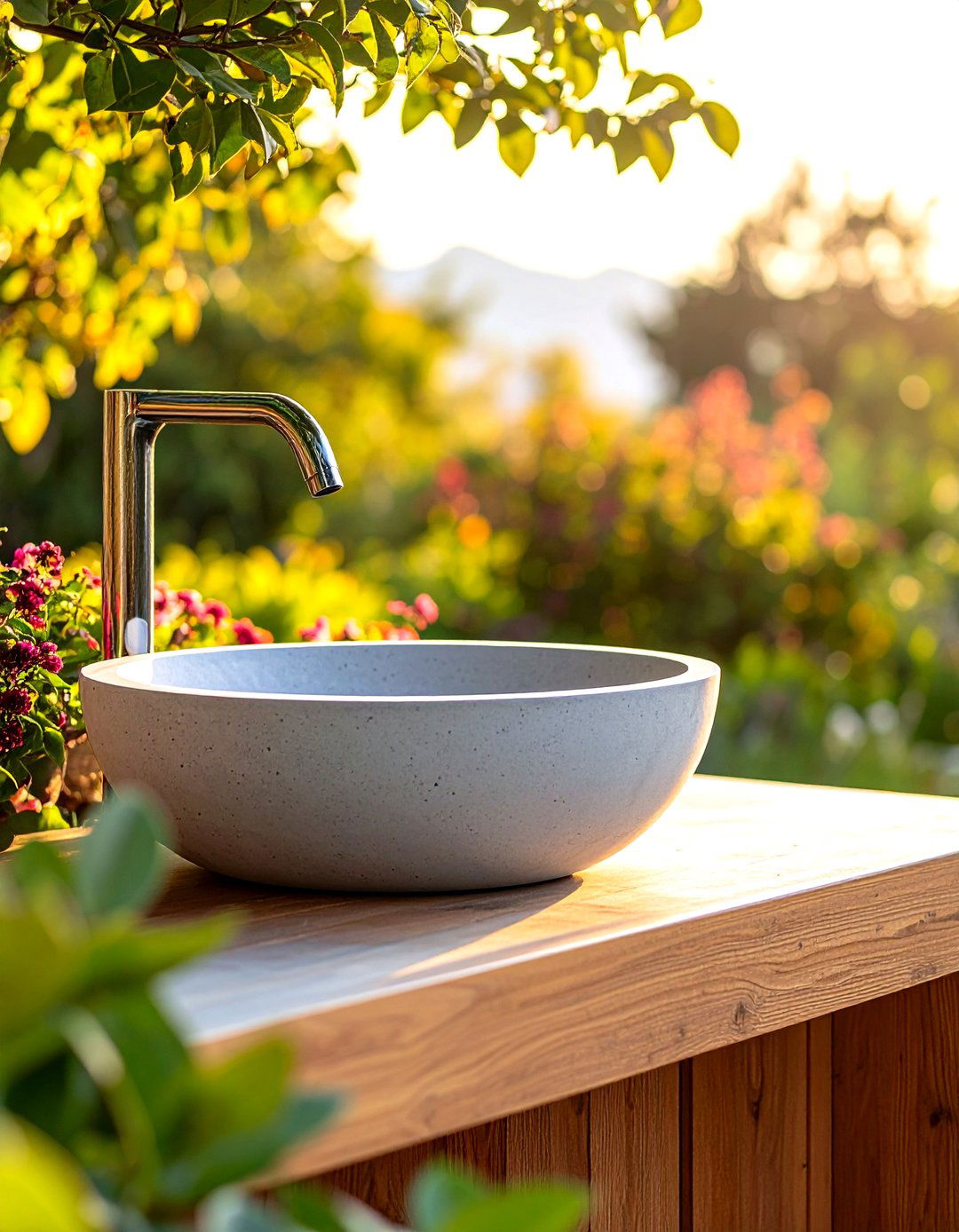
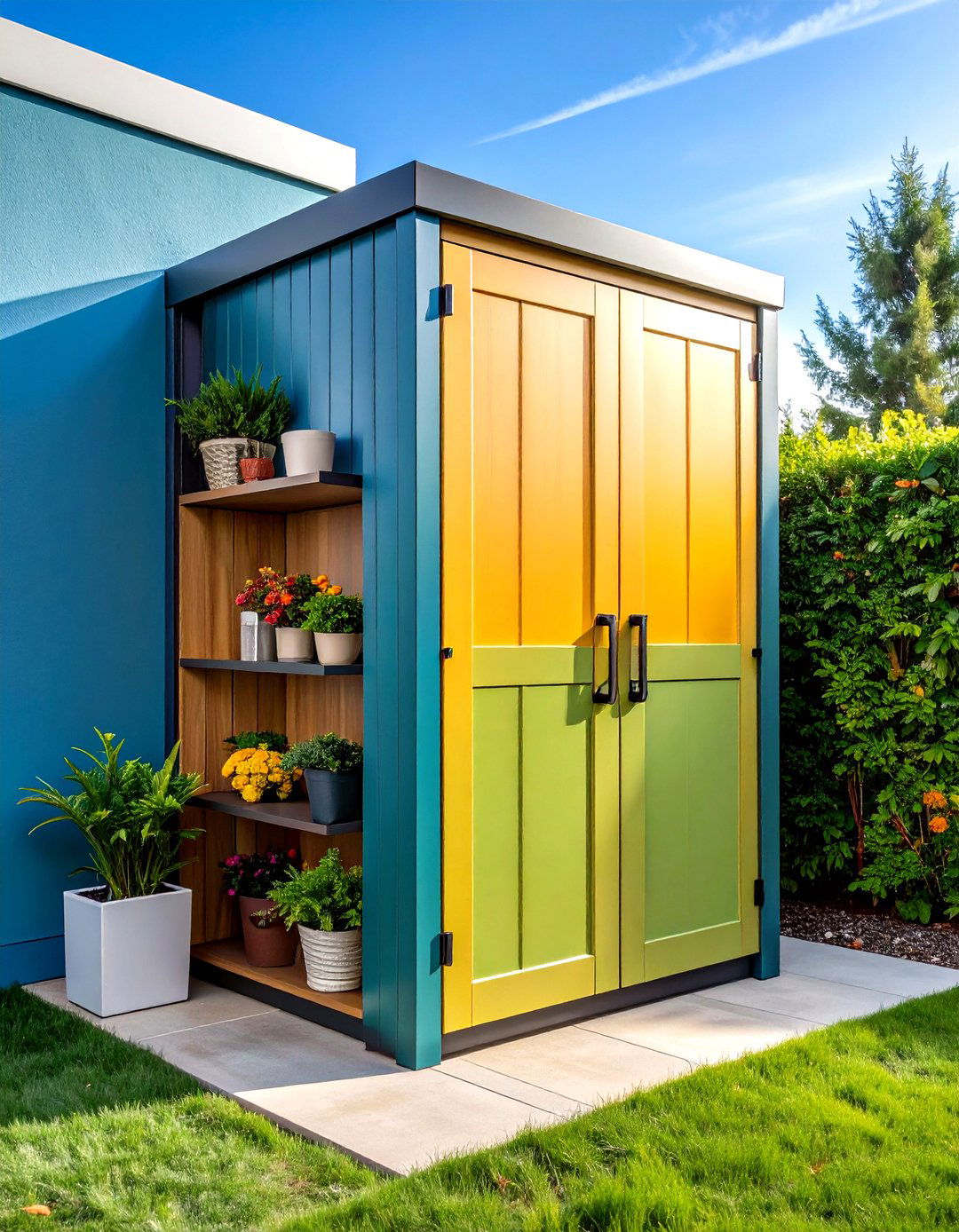
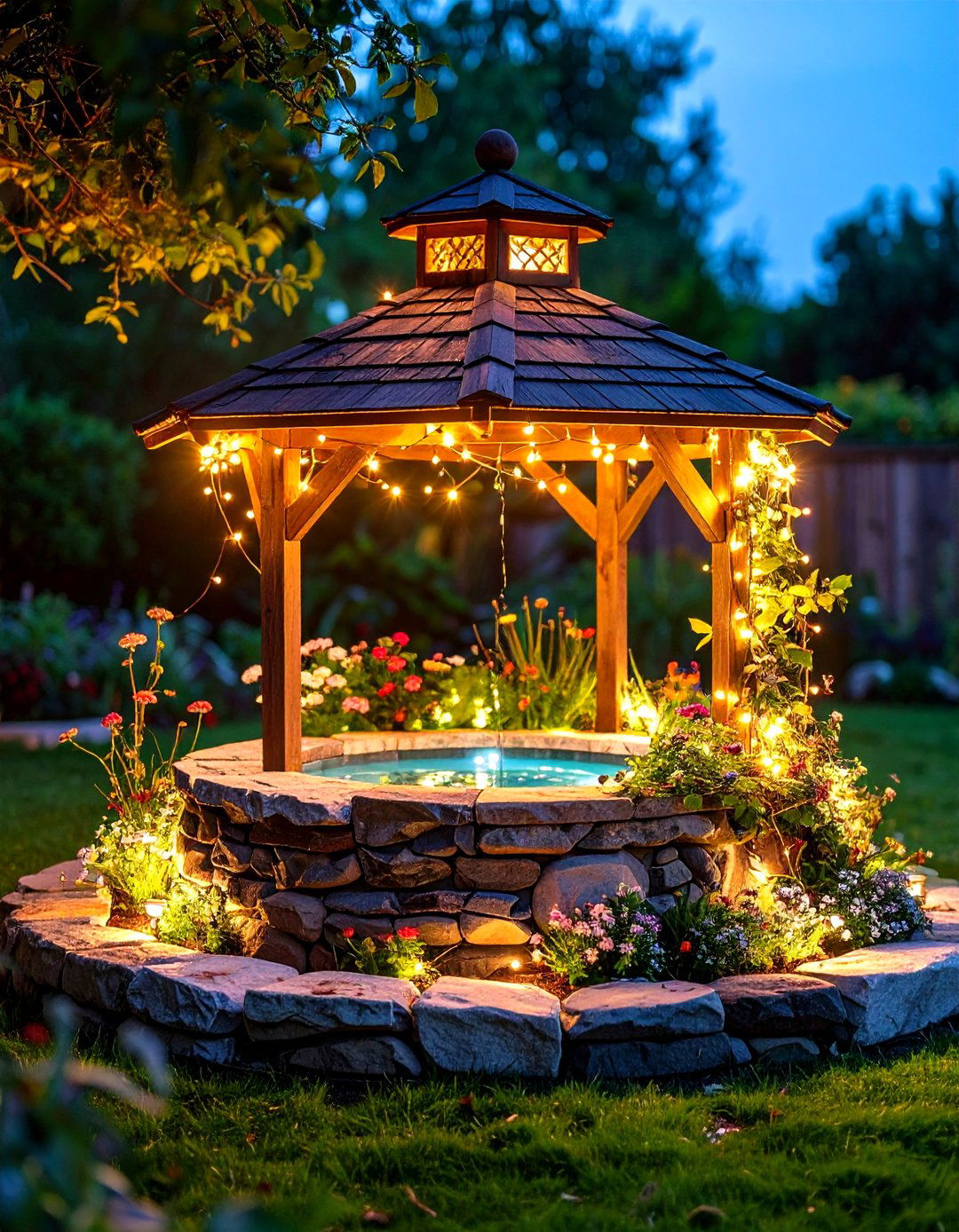
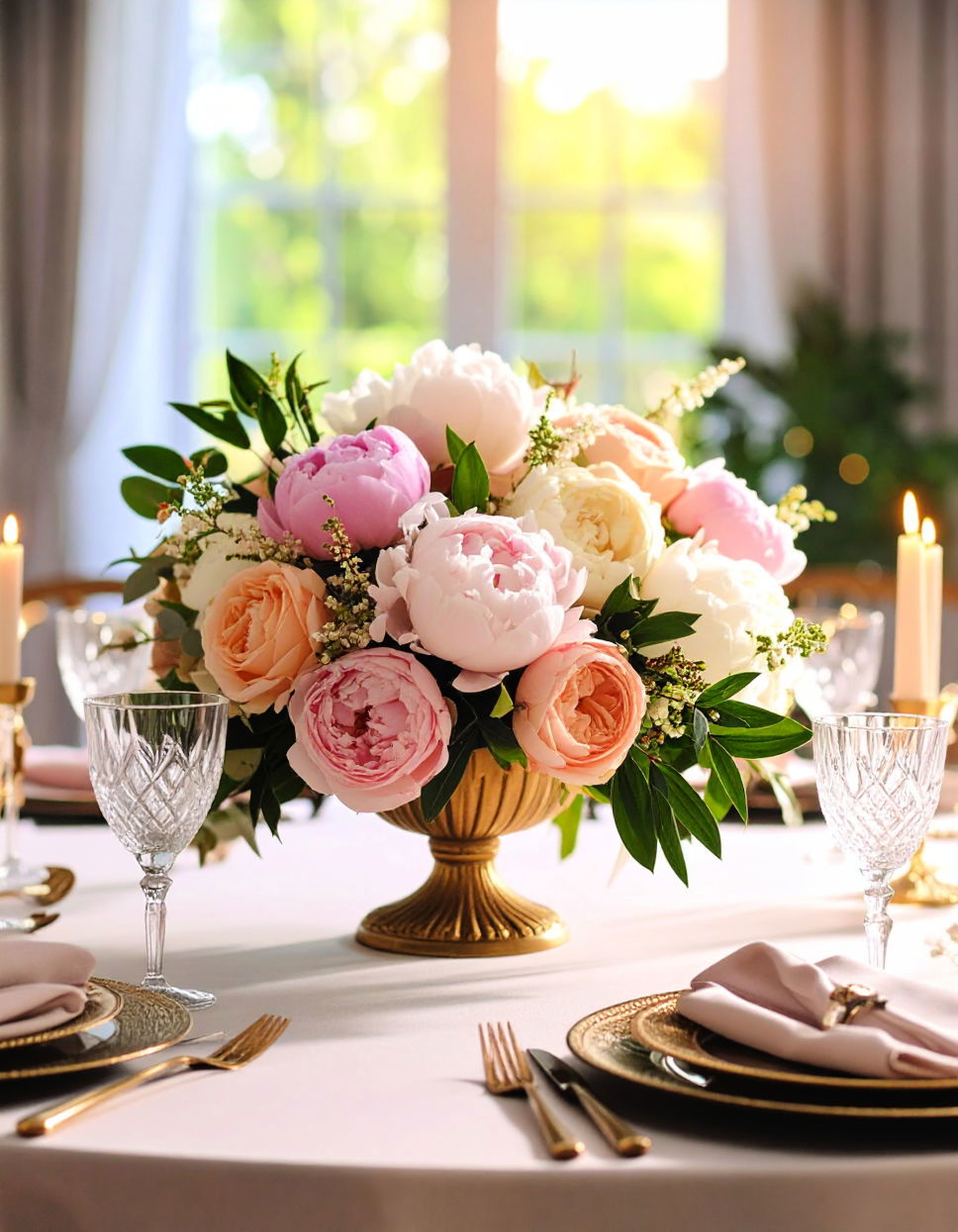
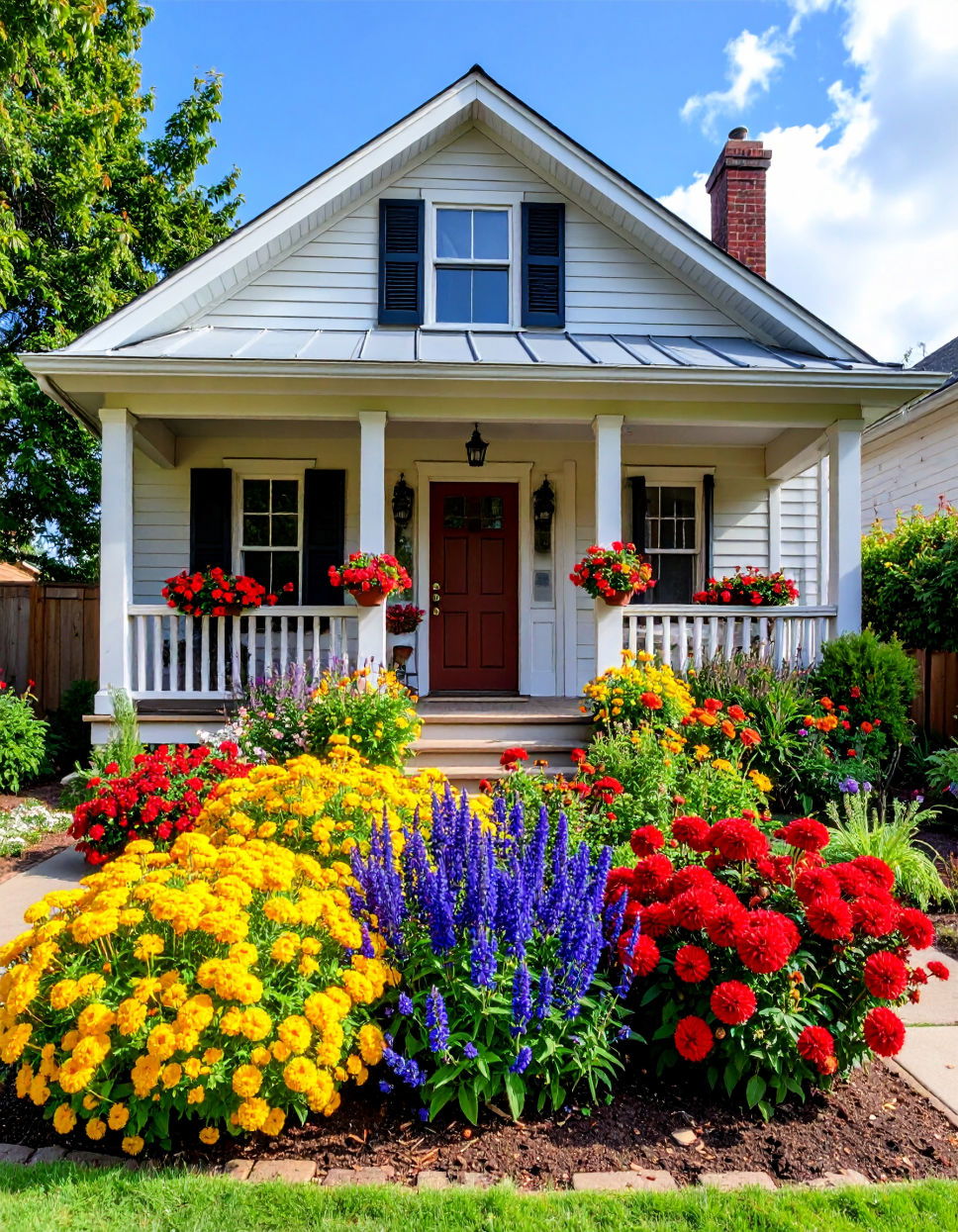
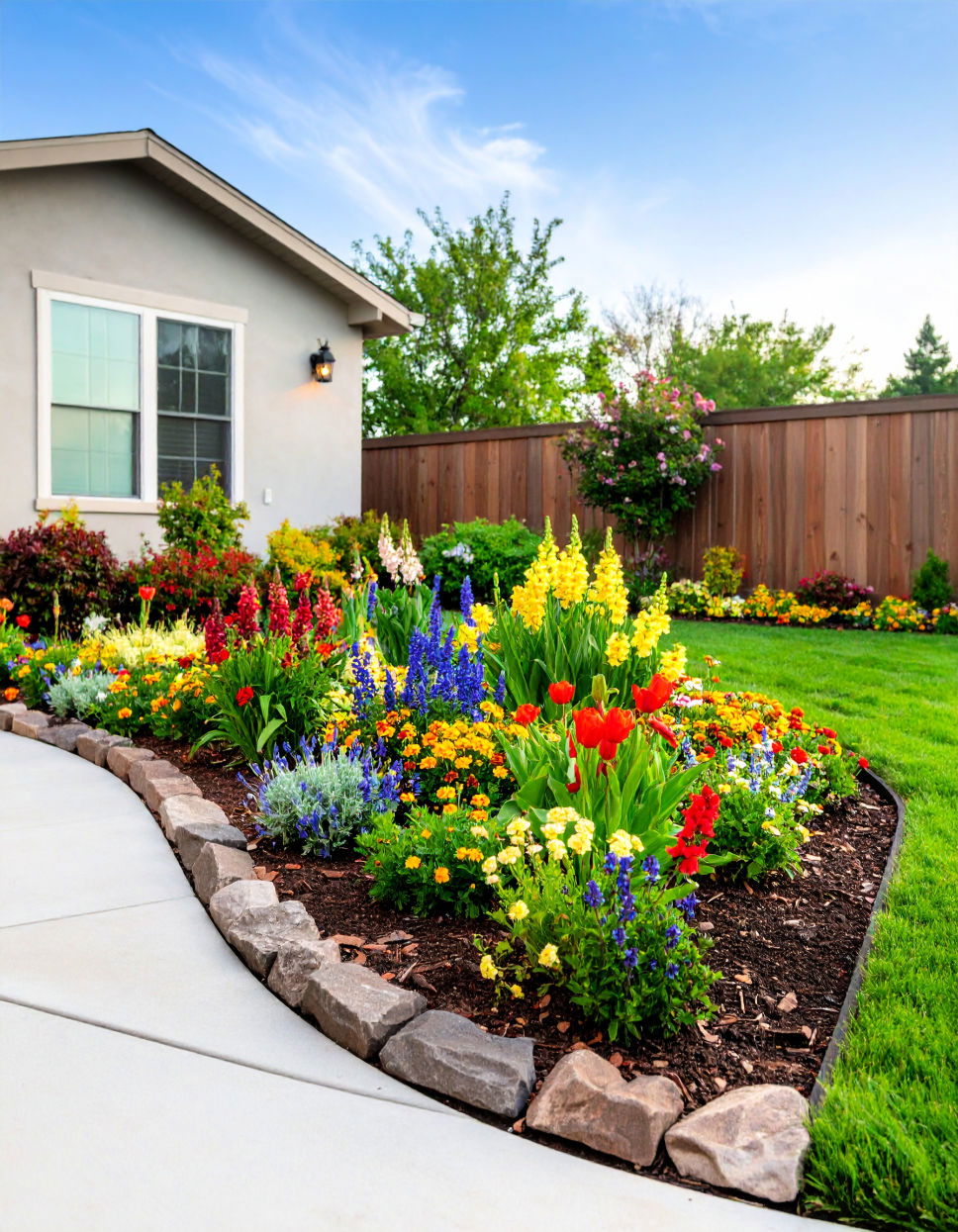

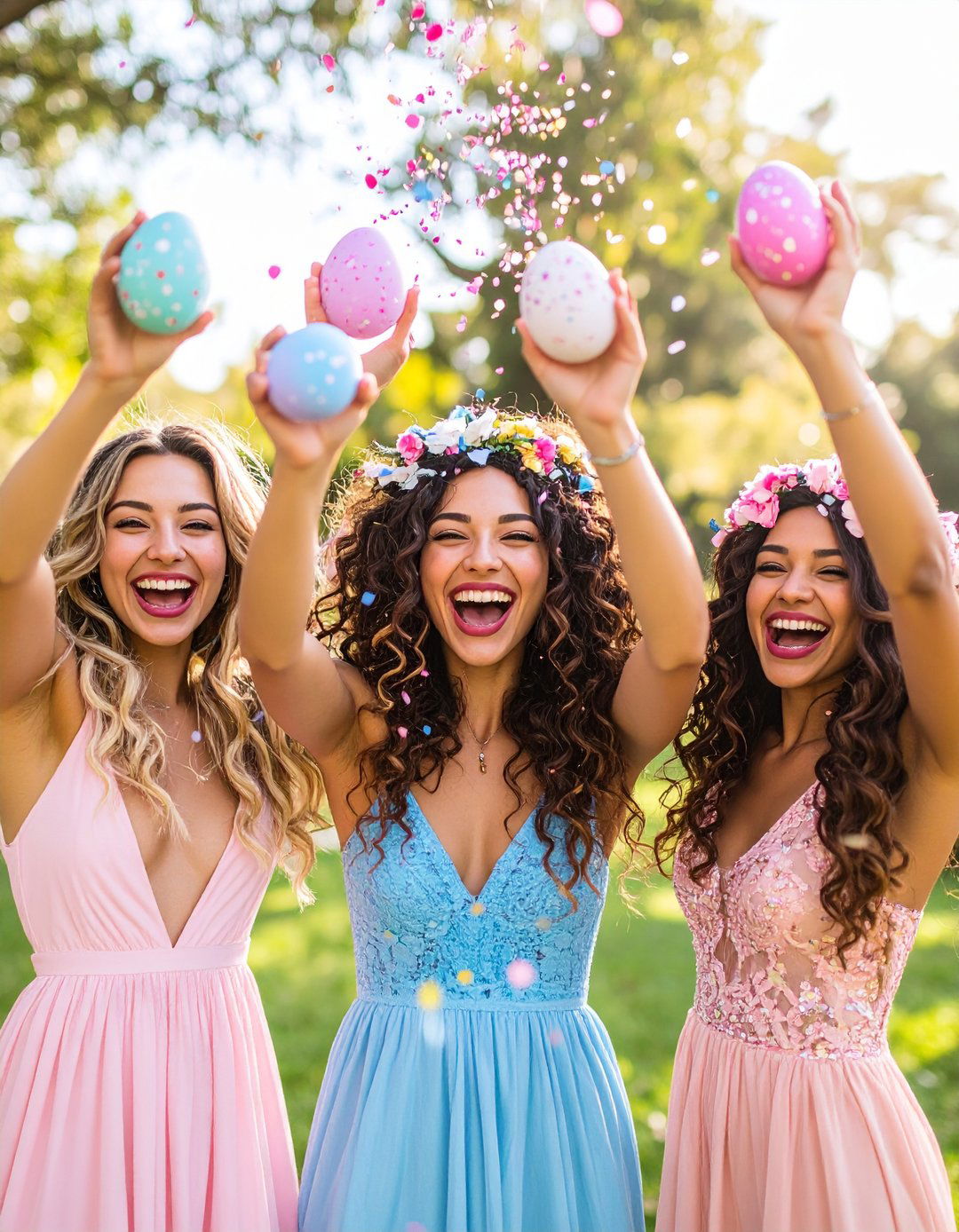
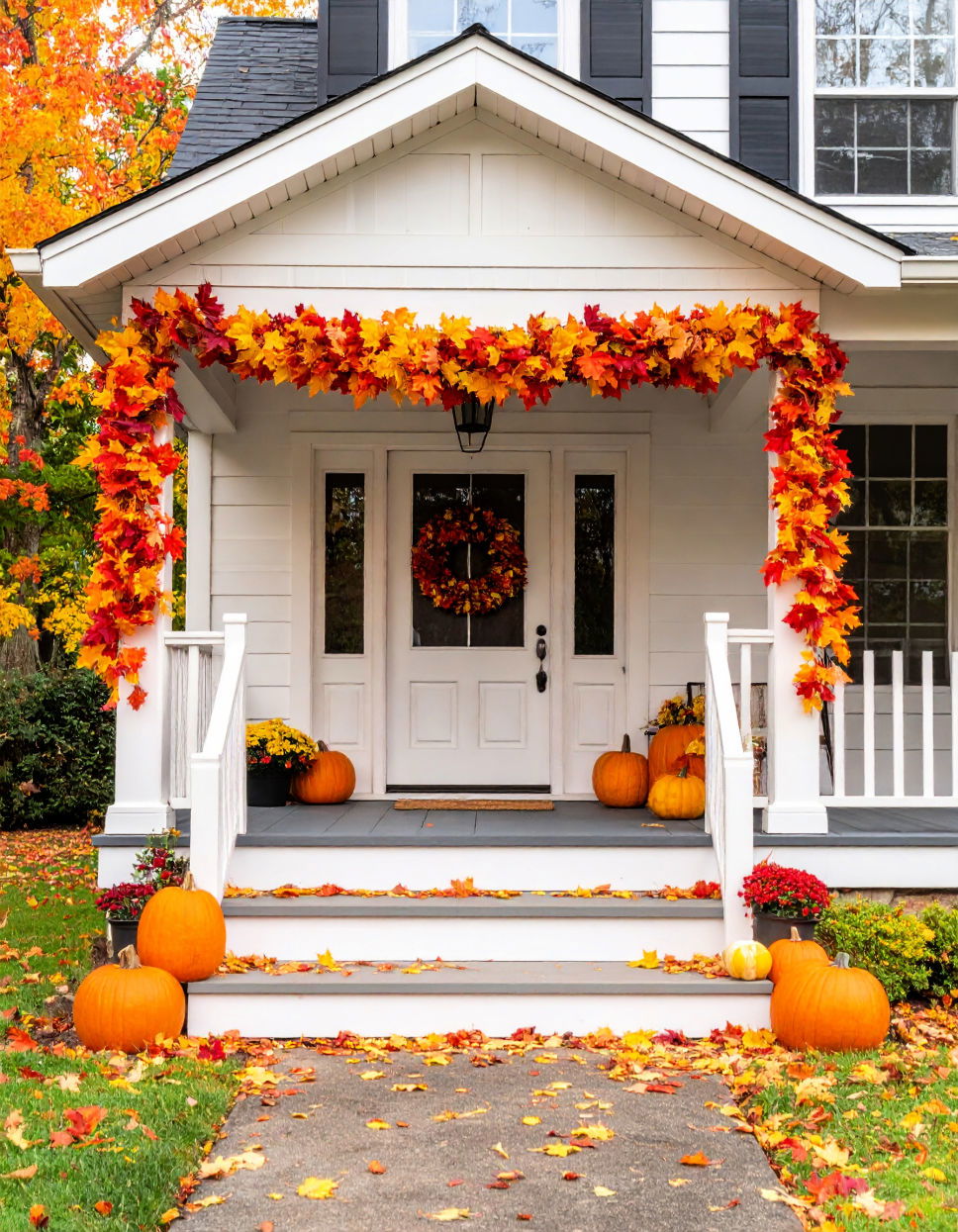
Leave a Reply